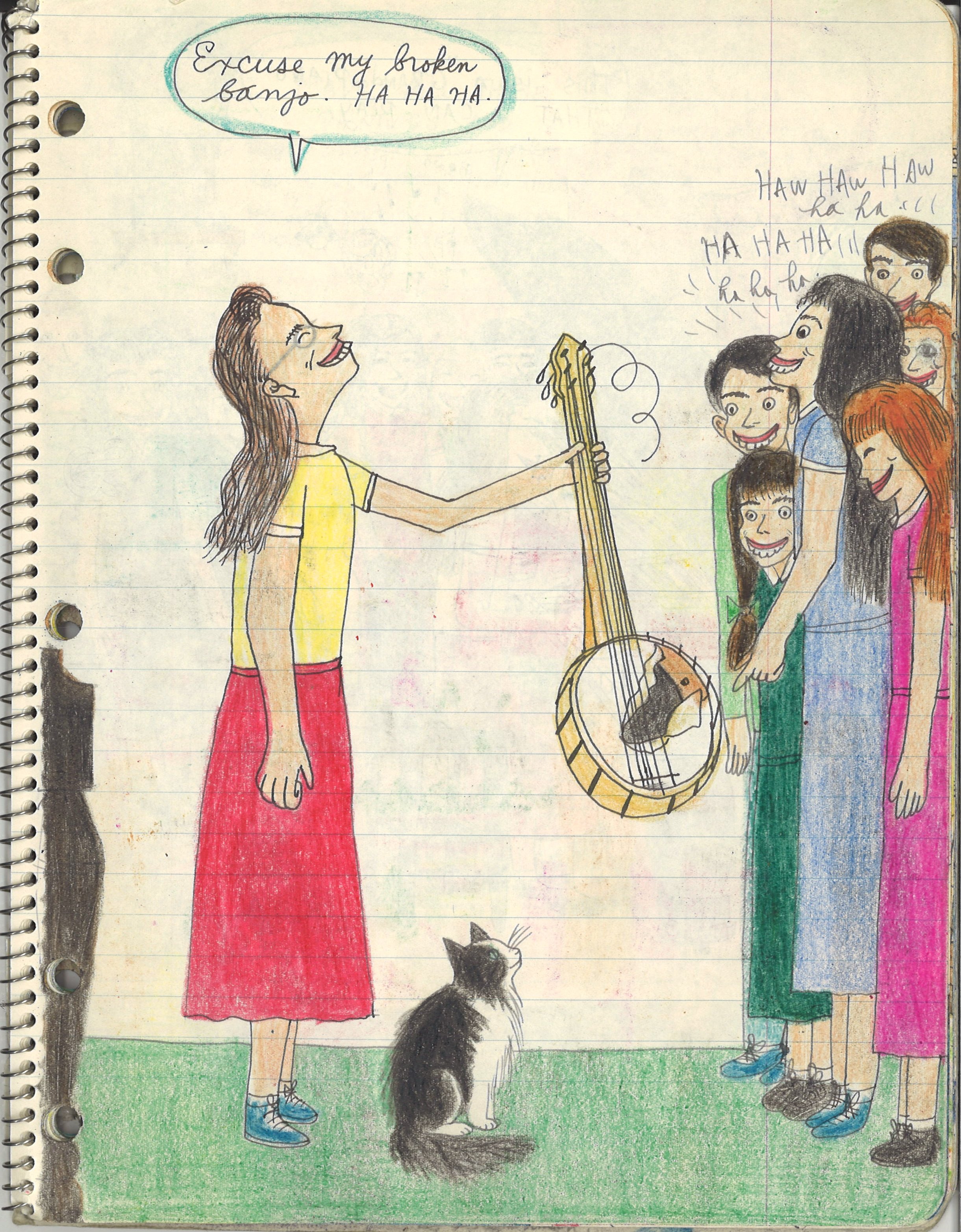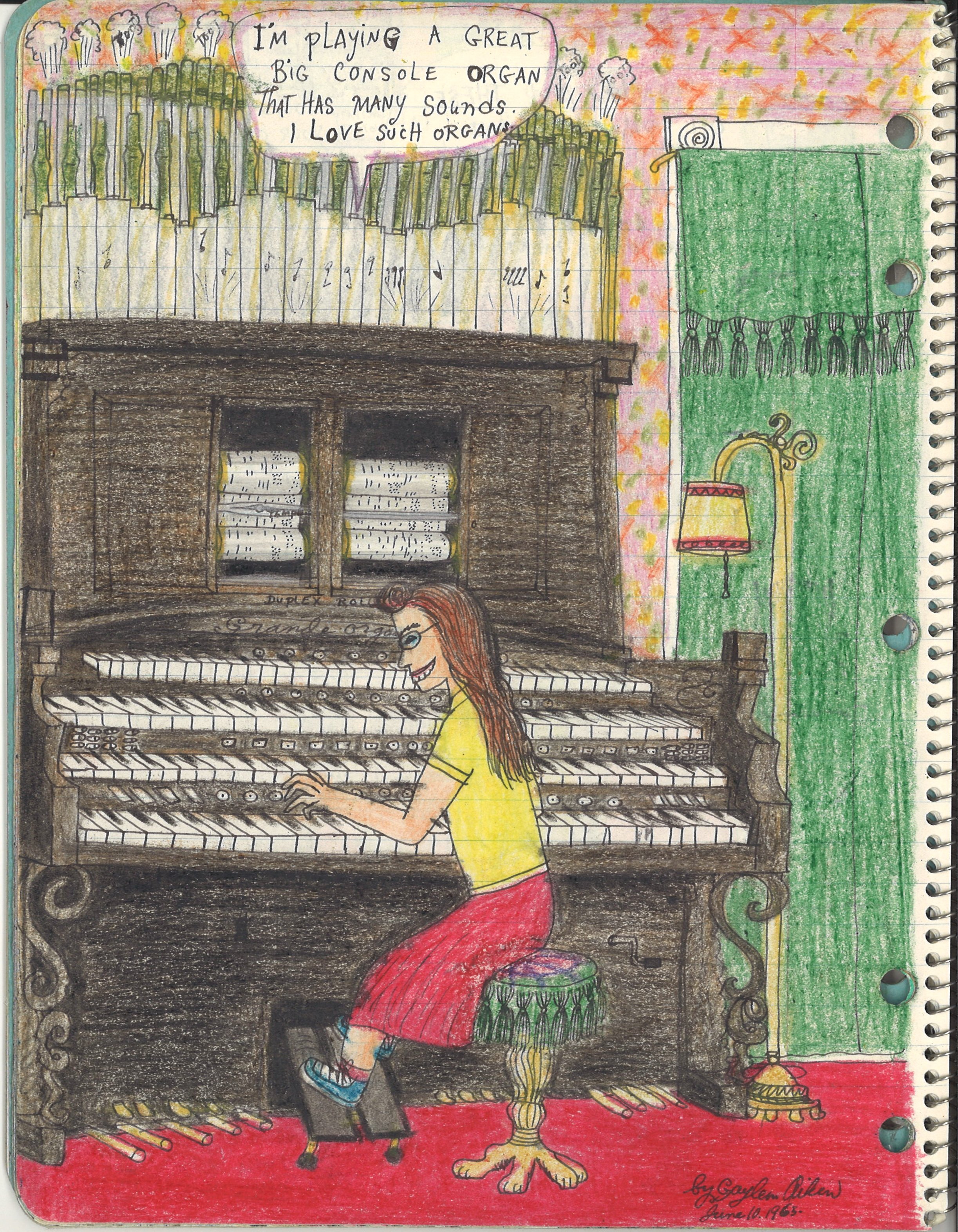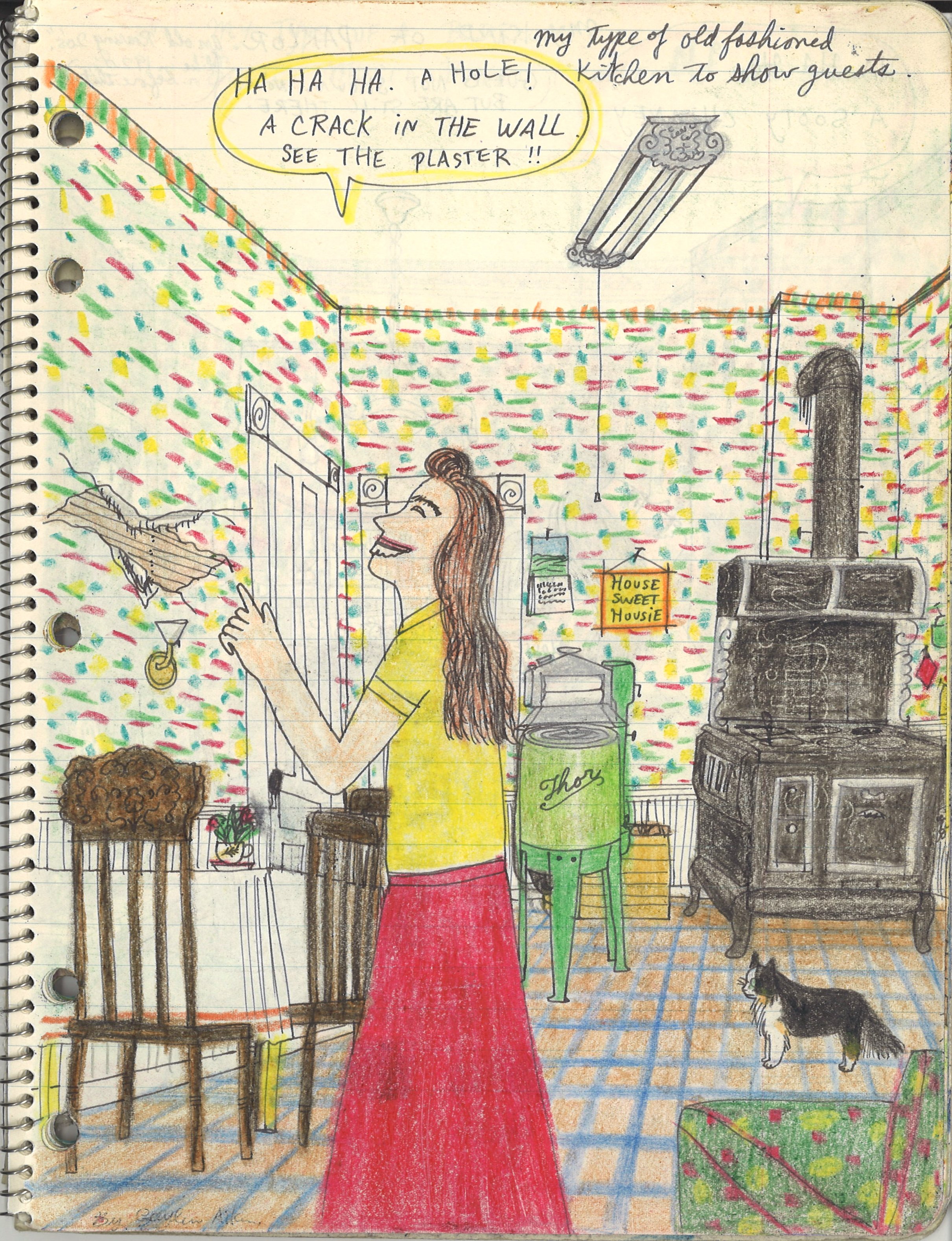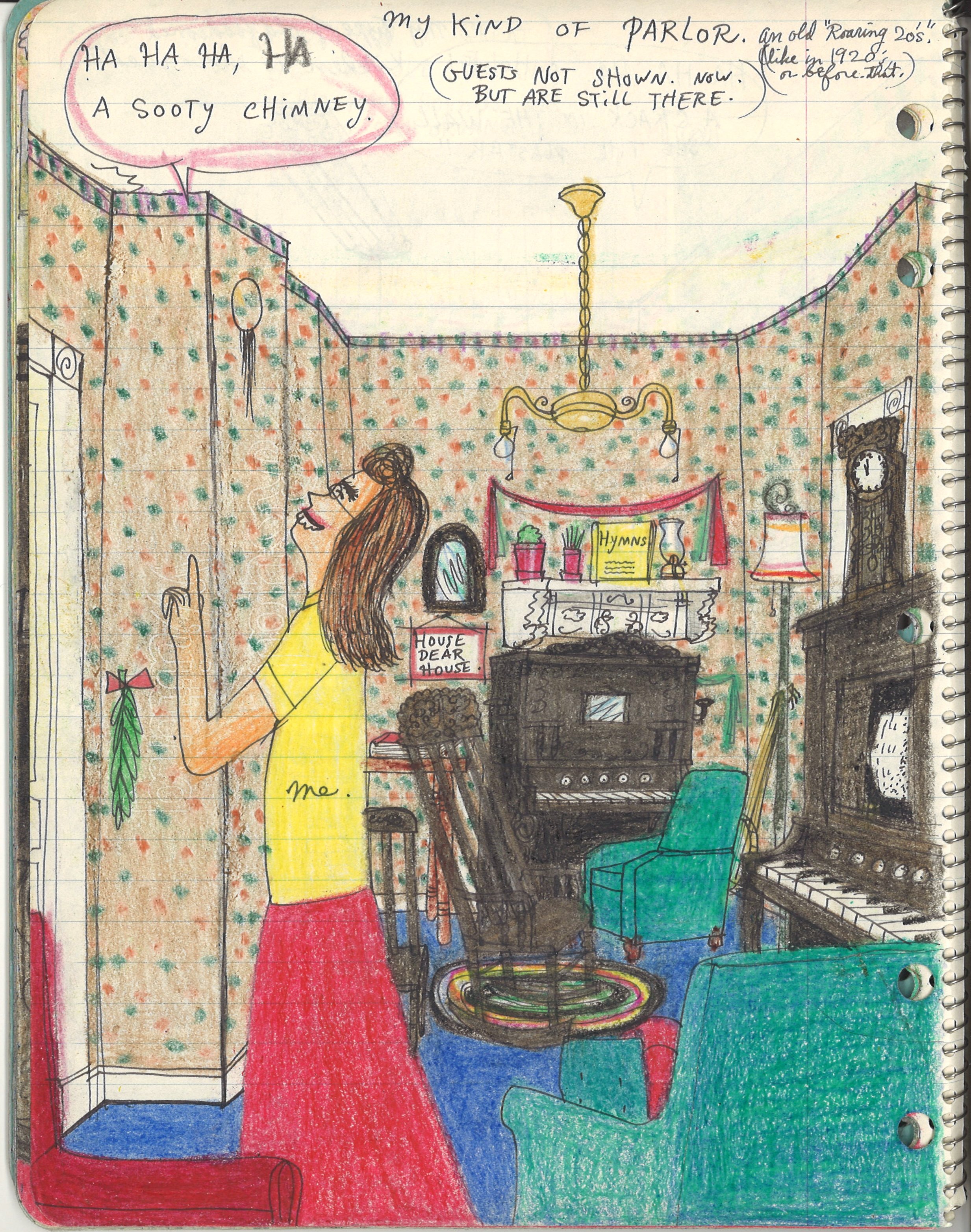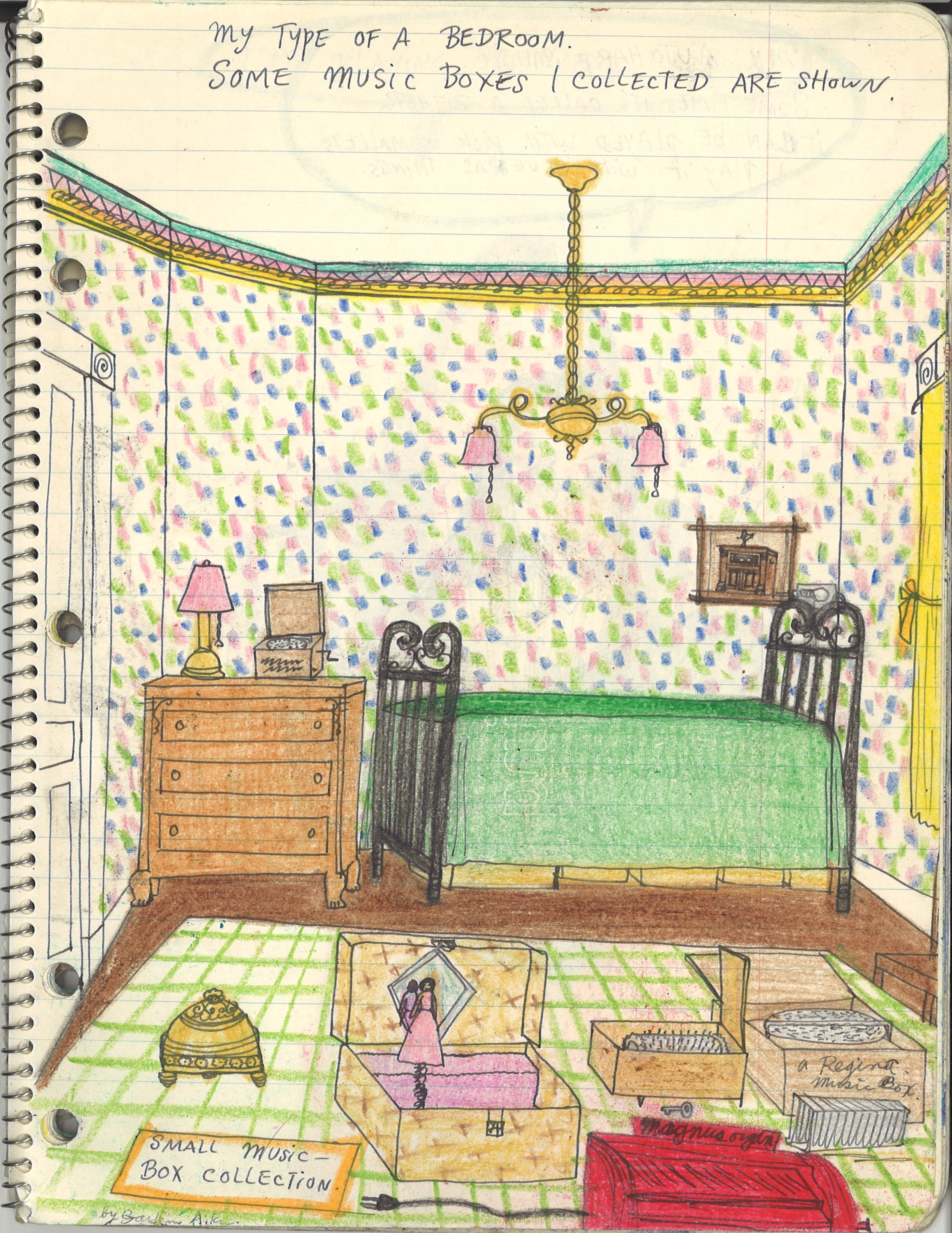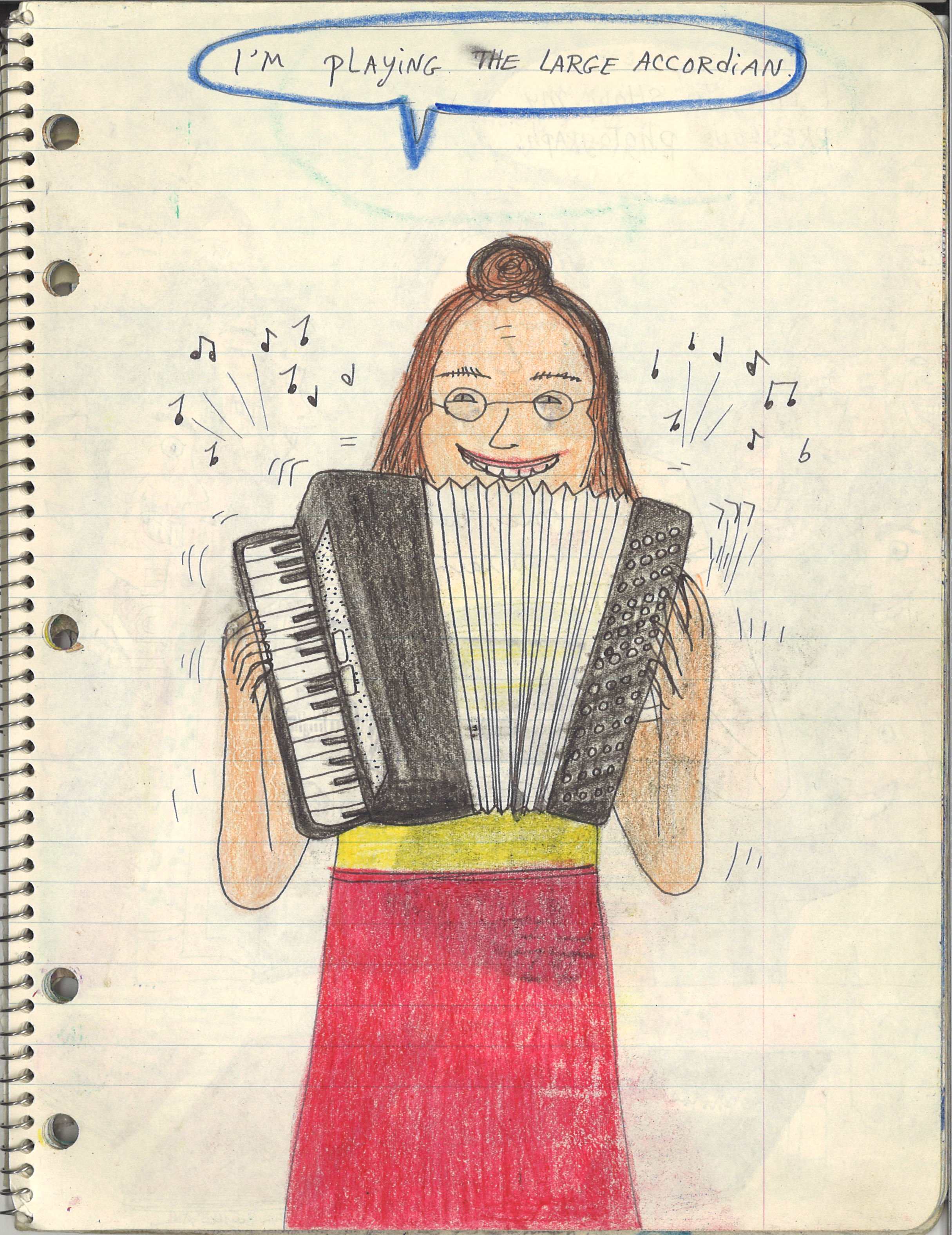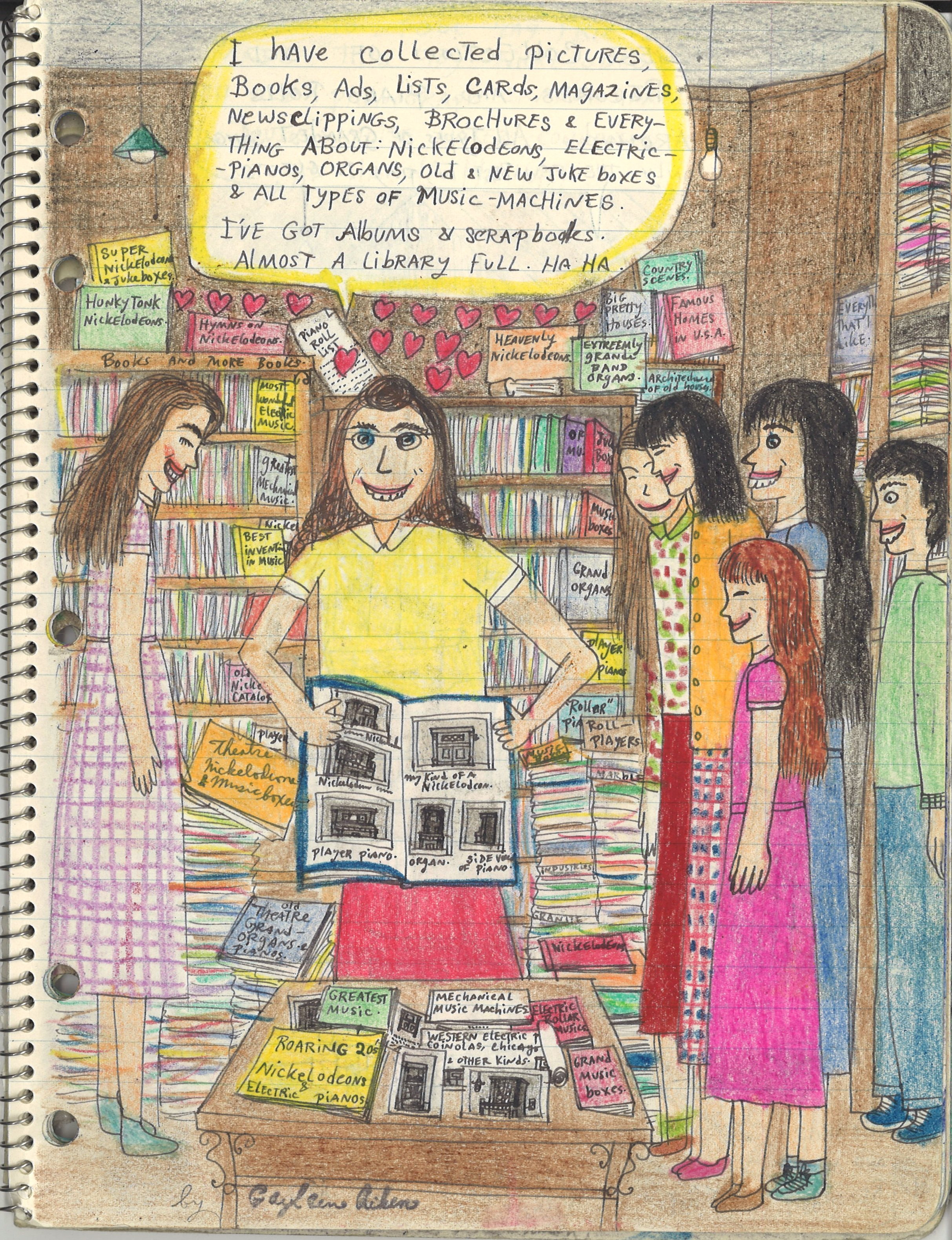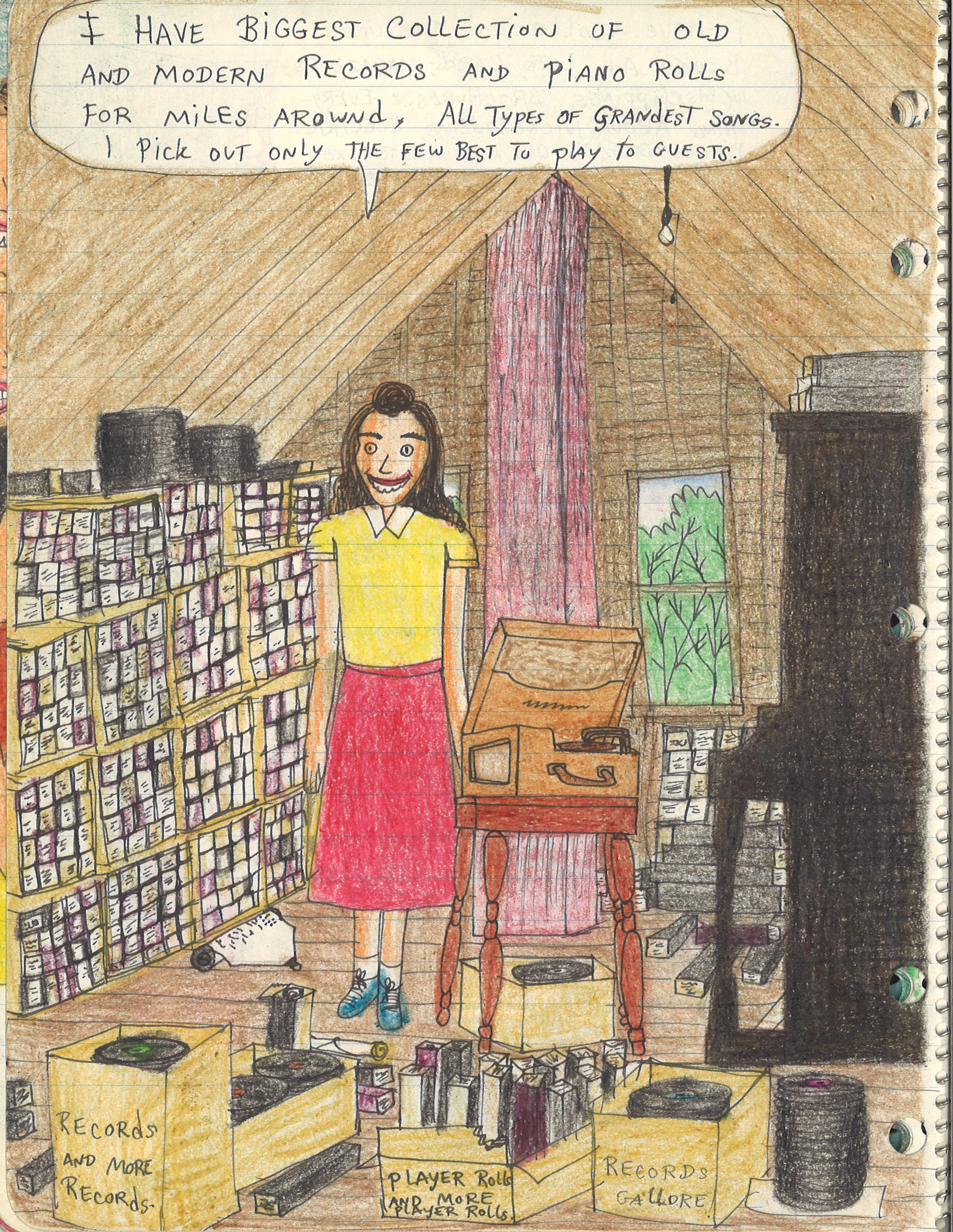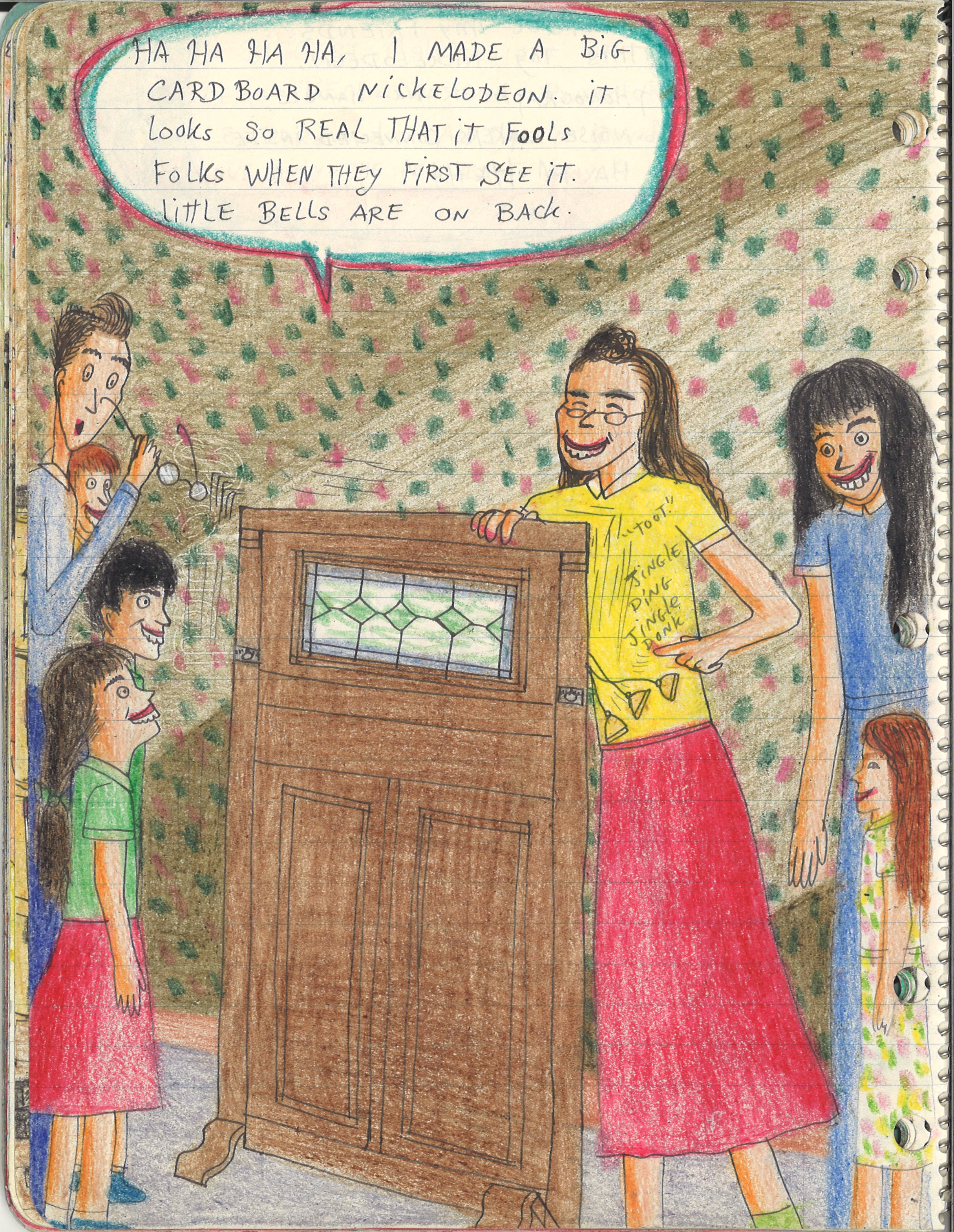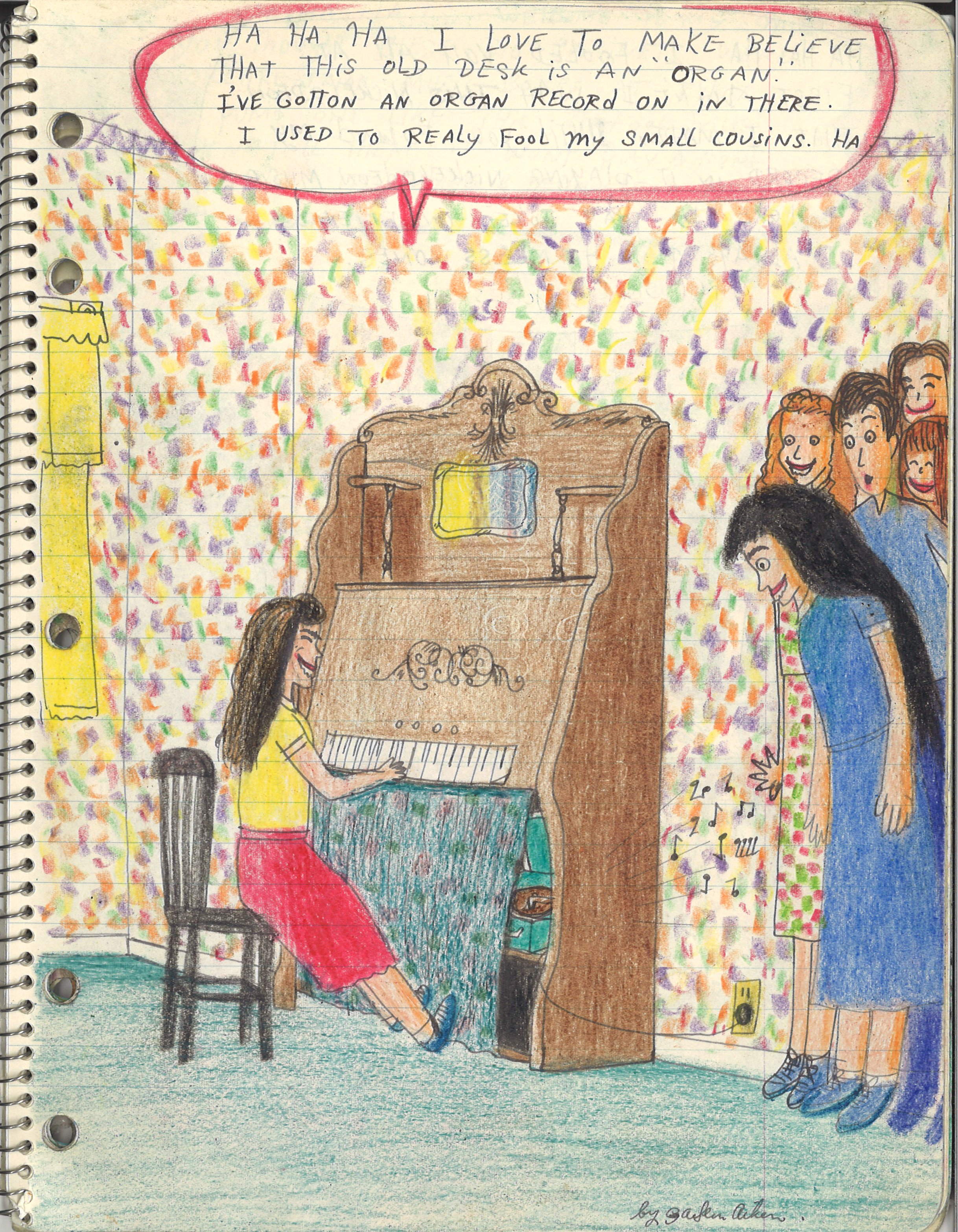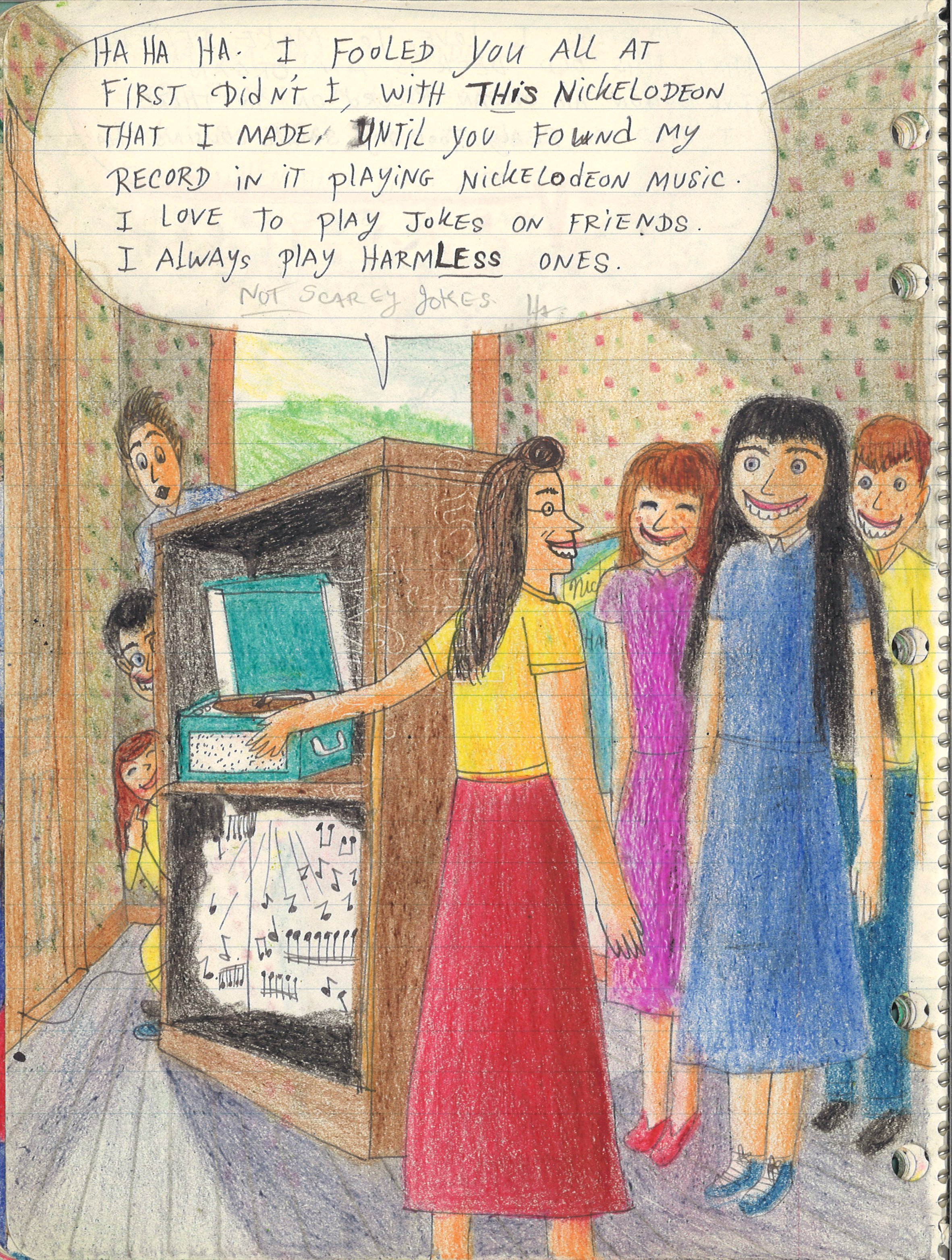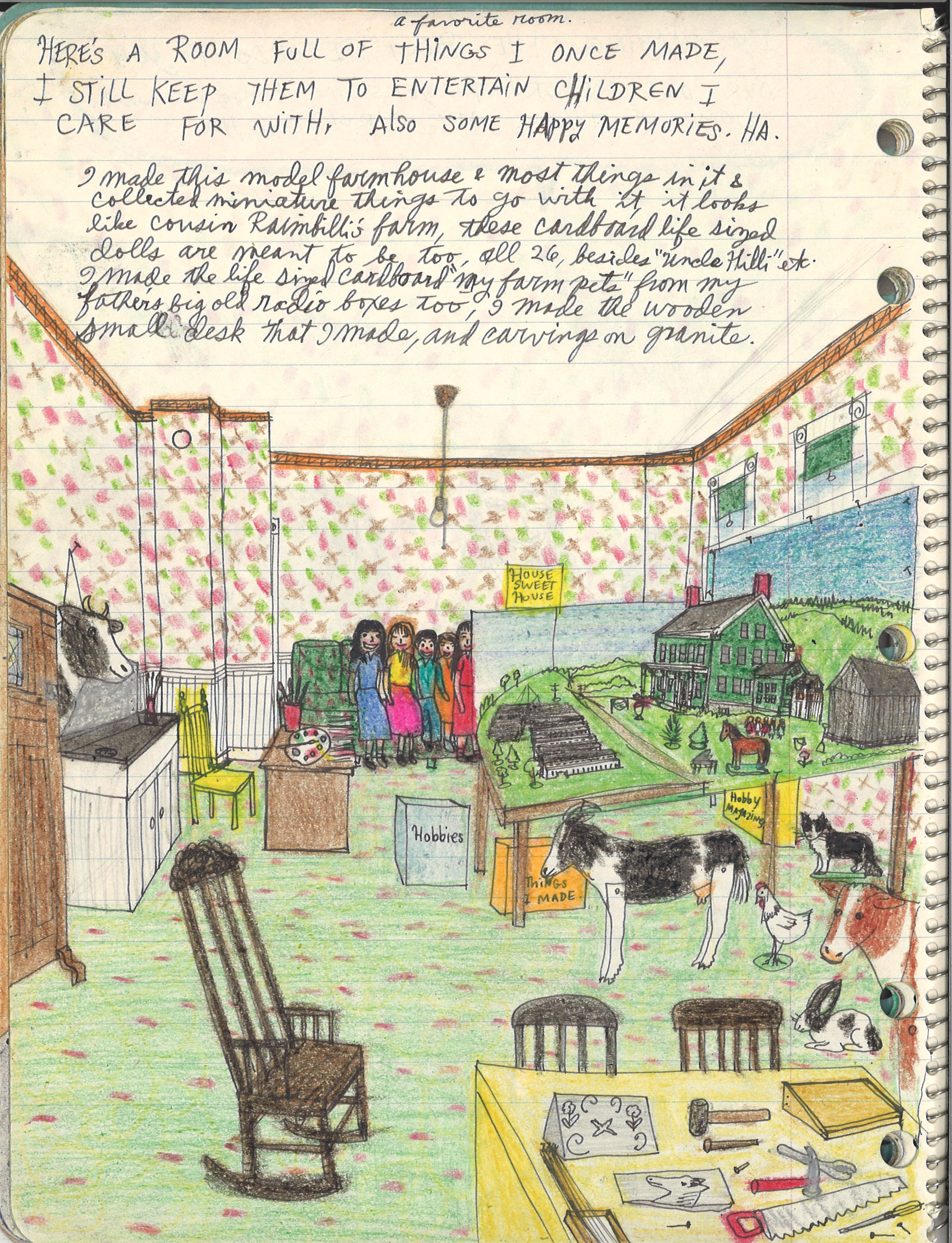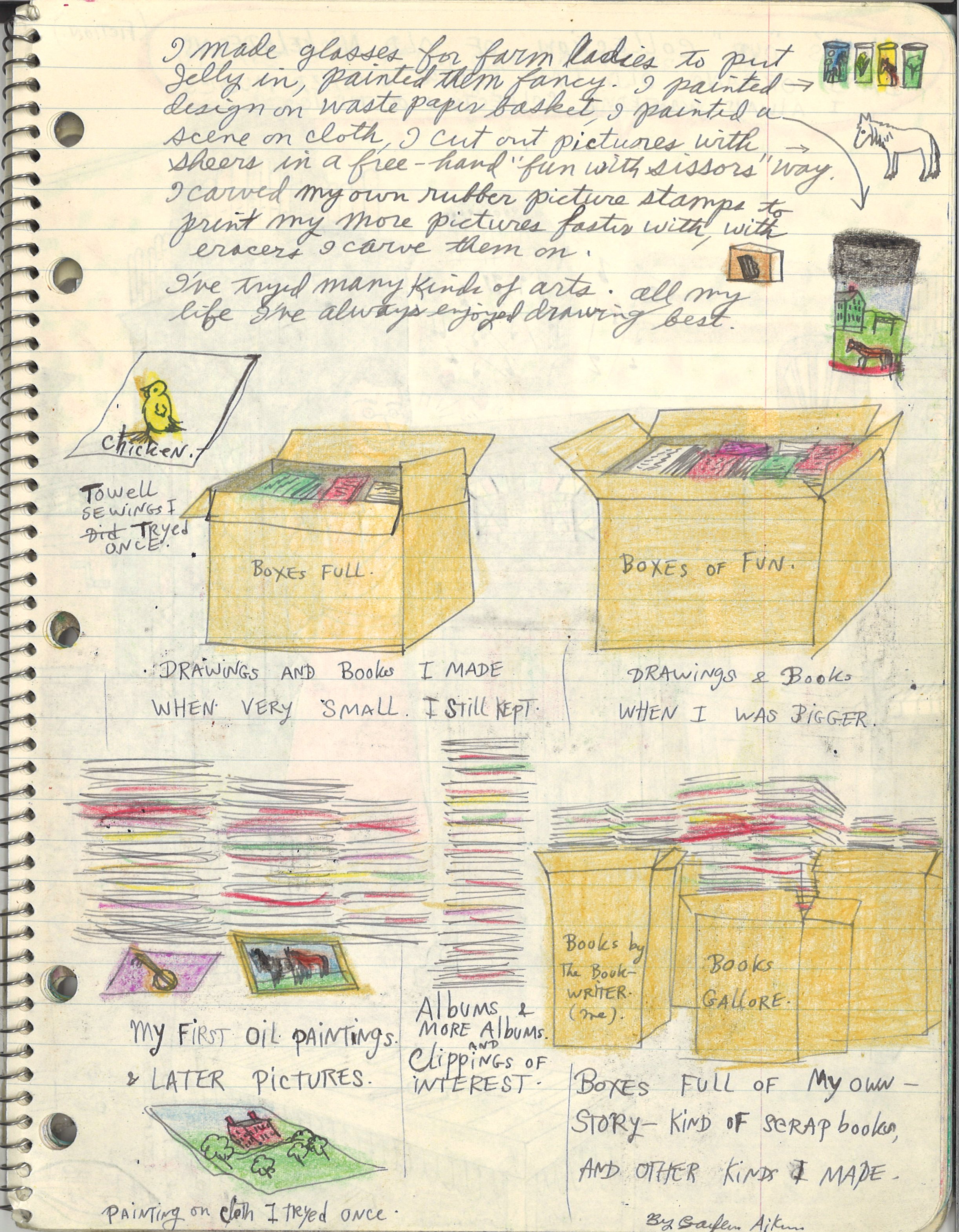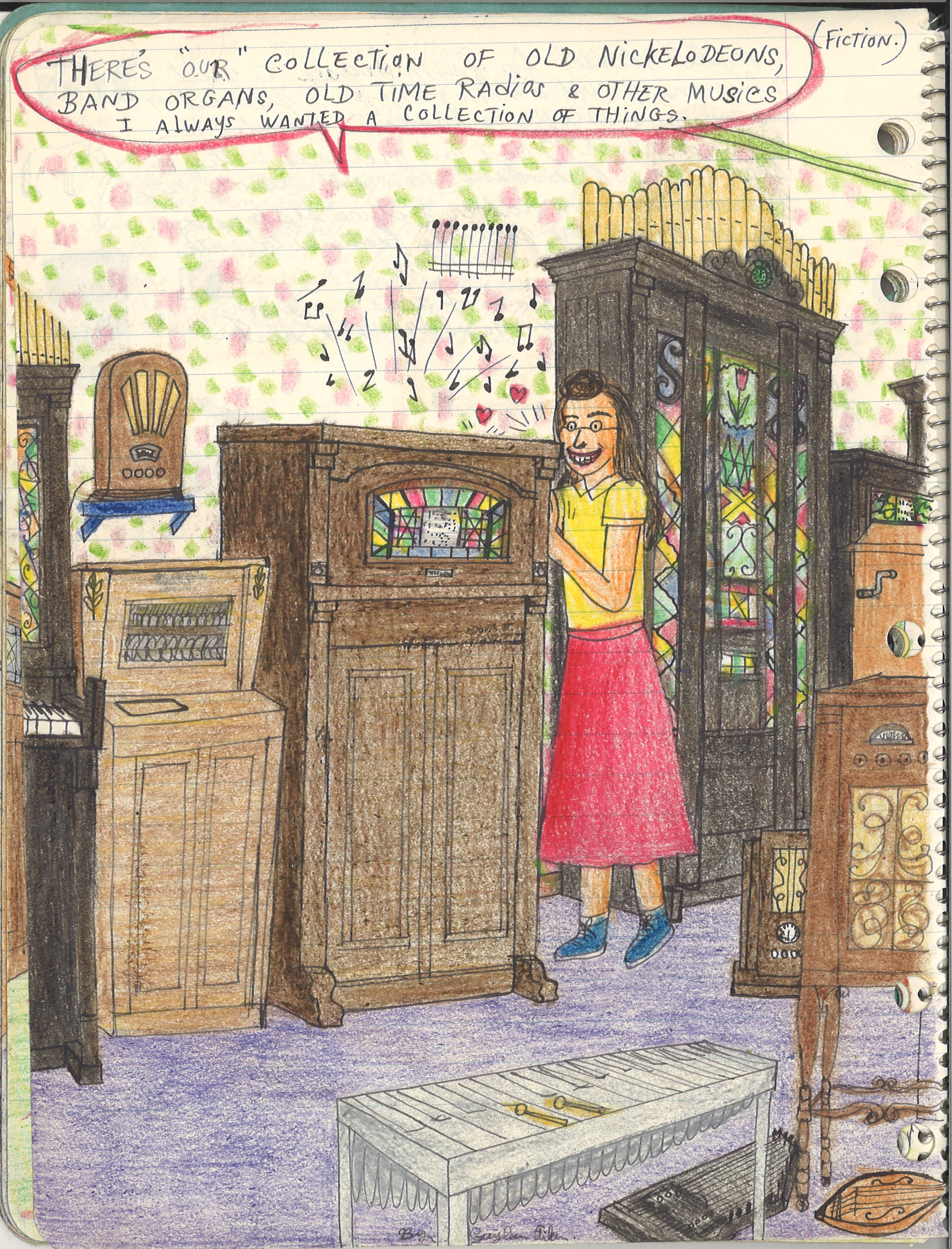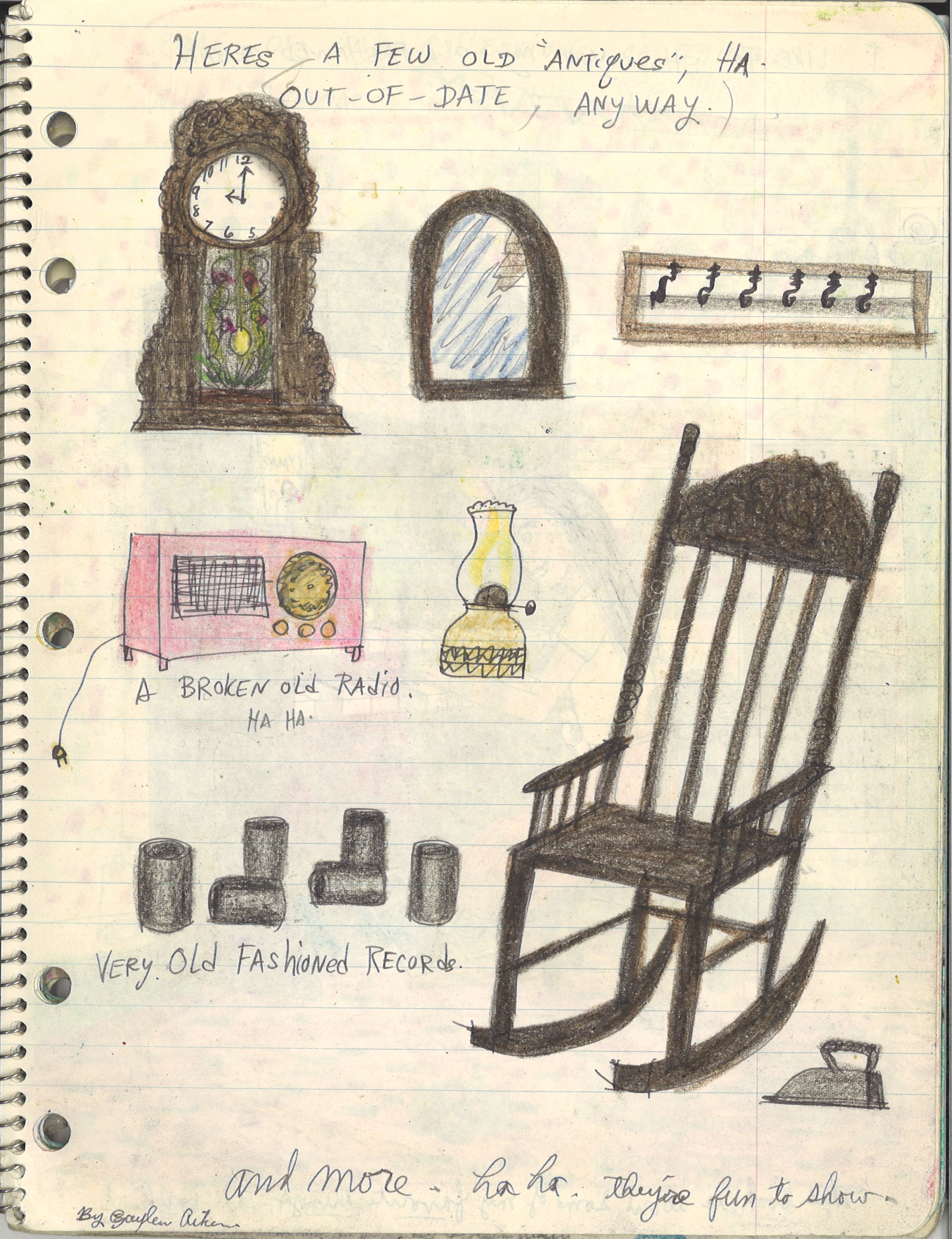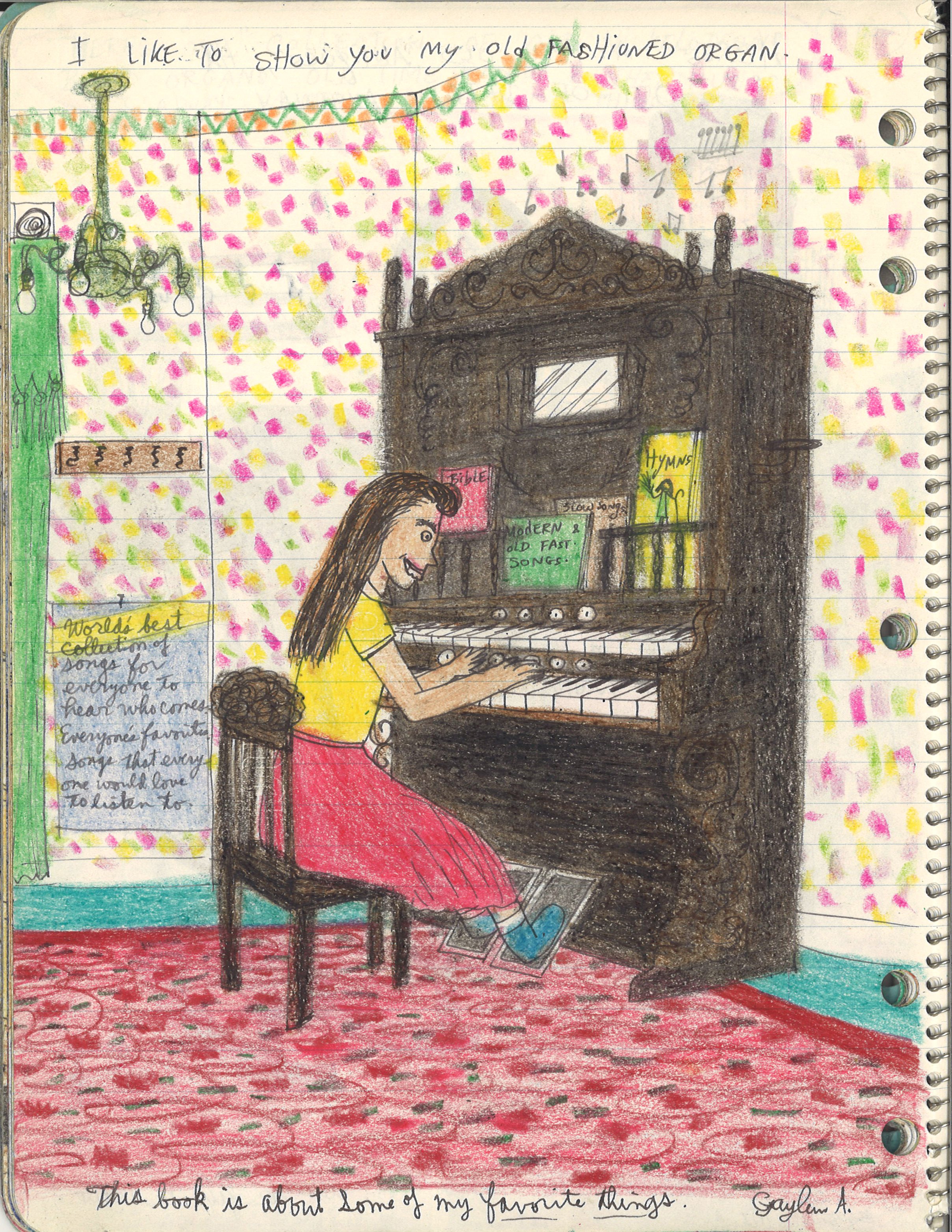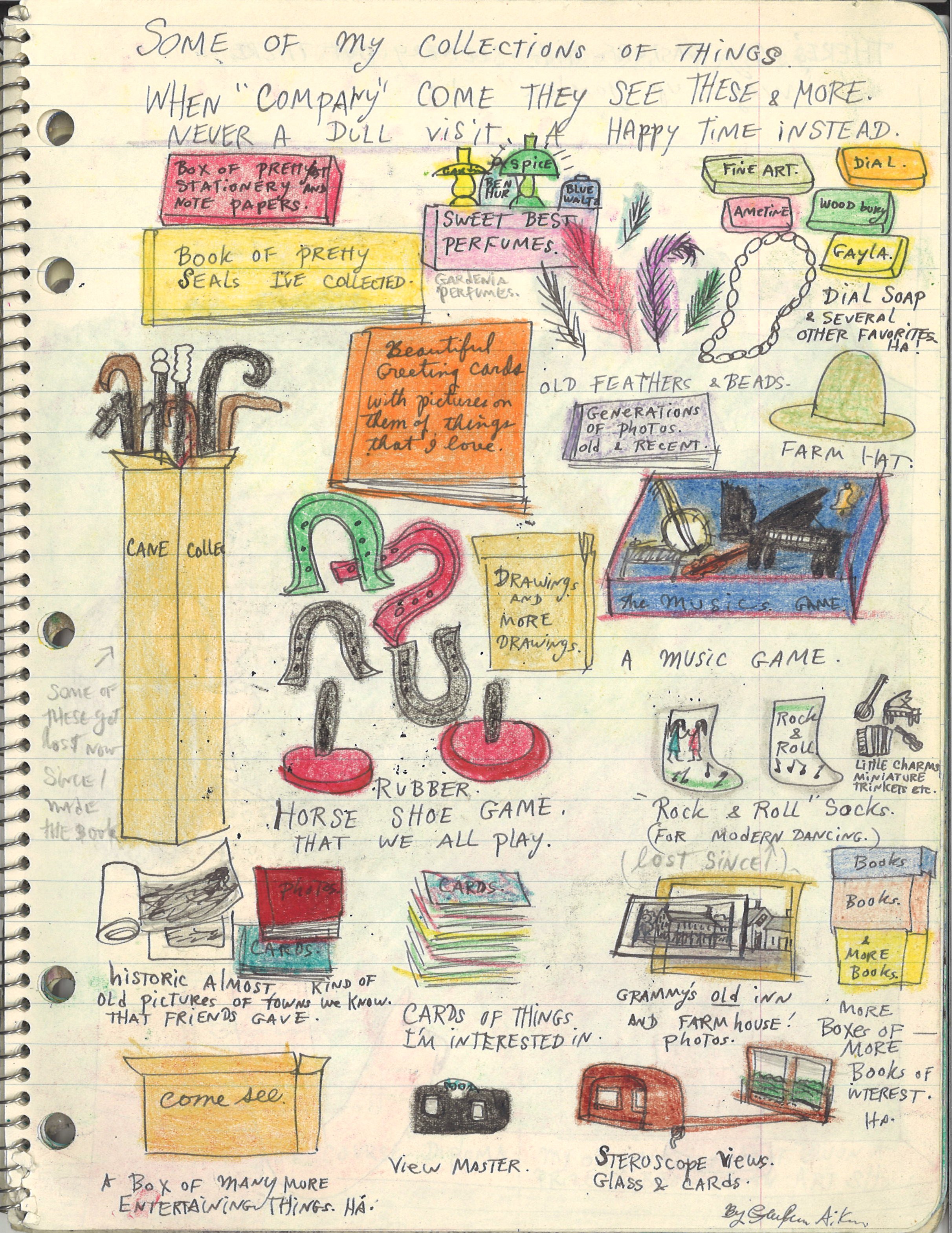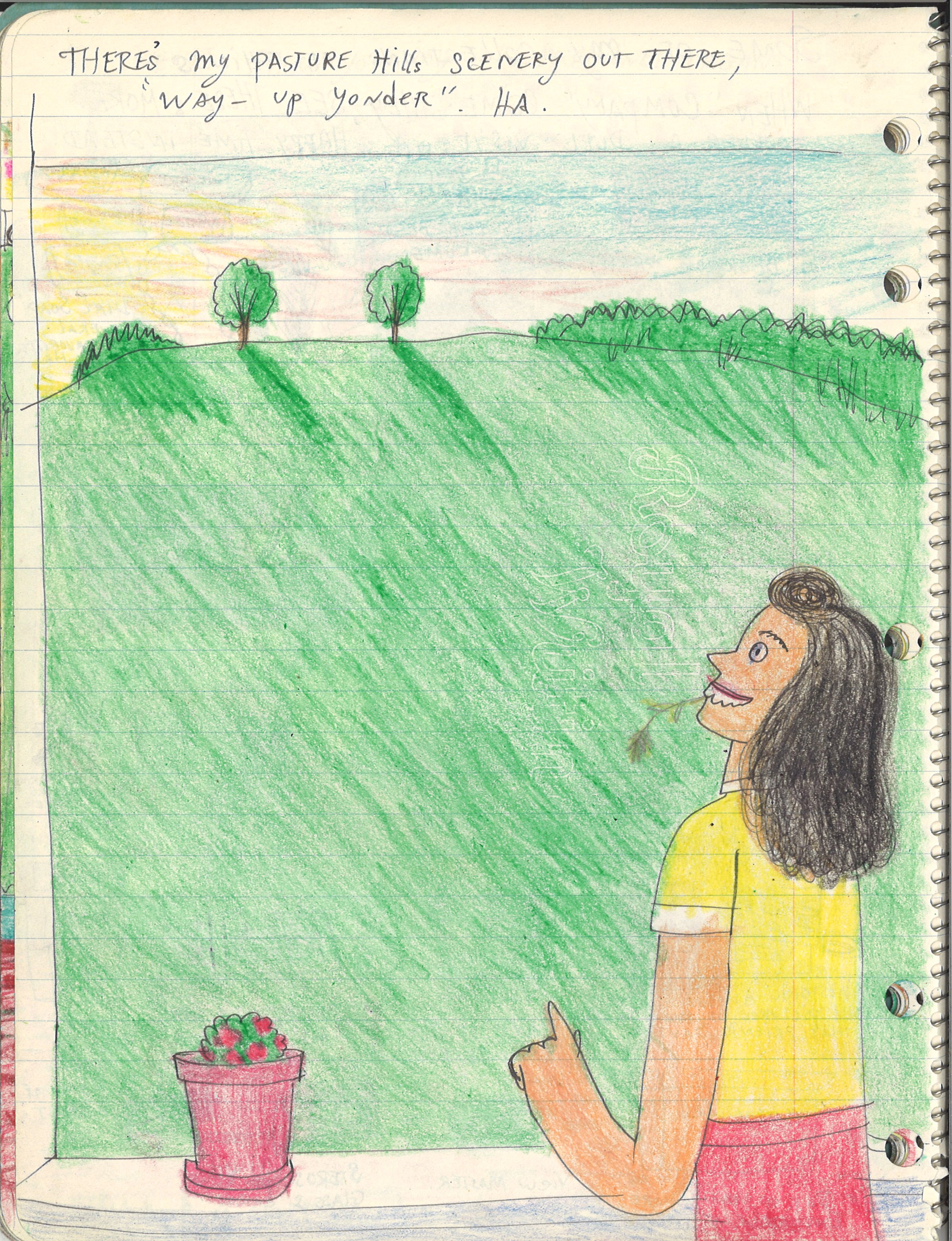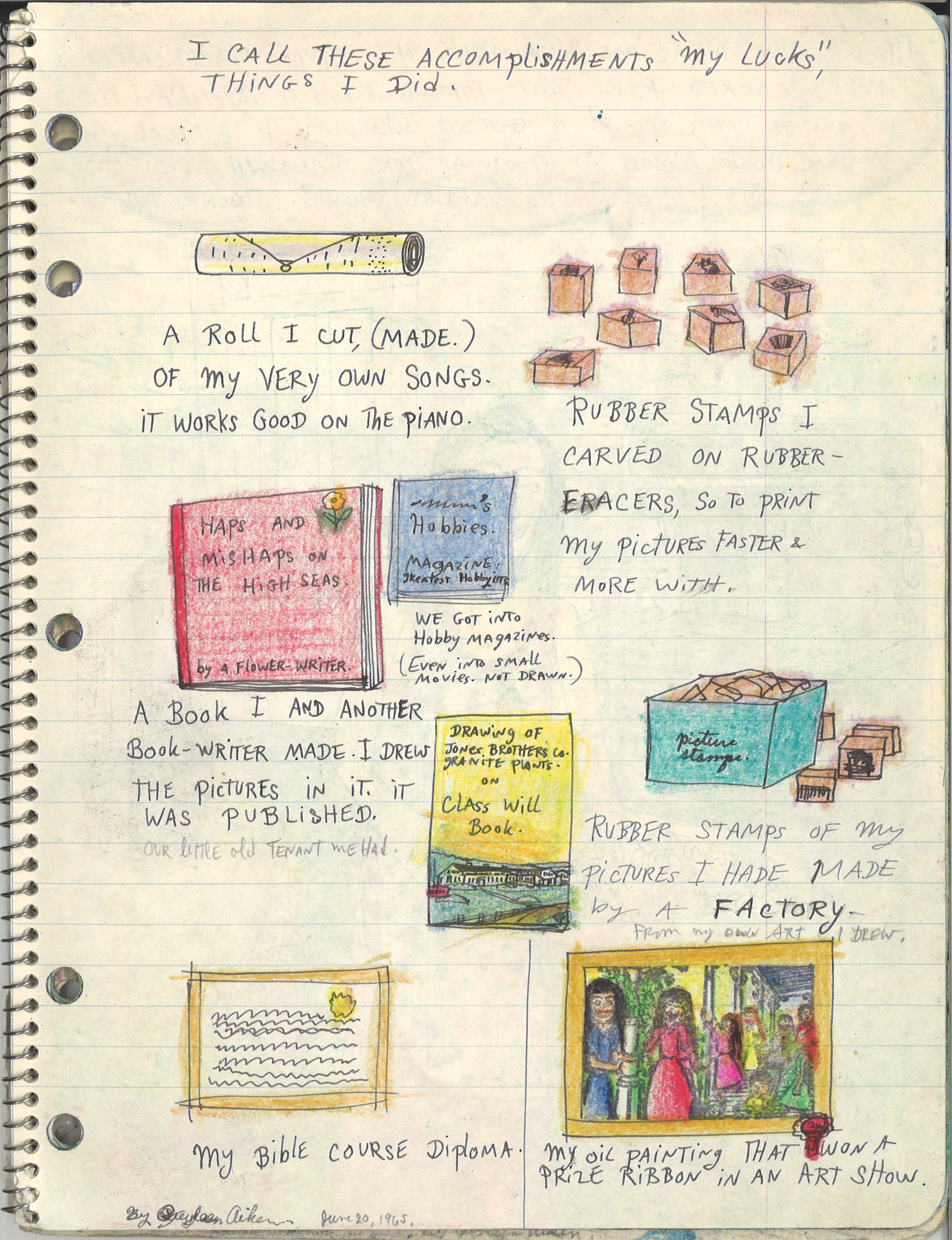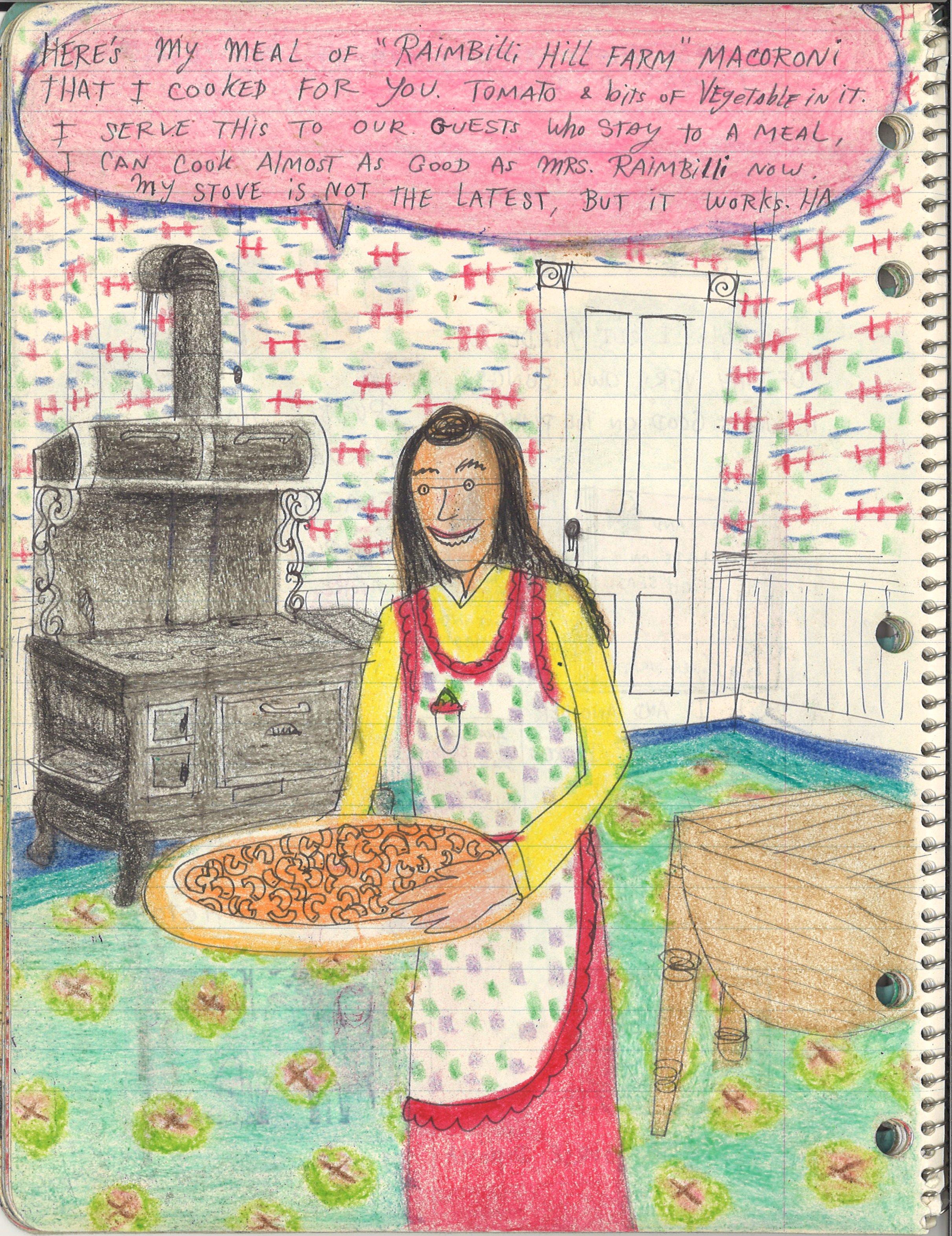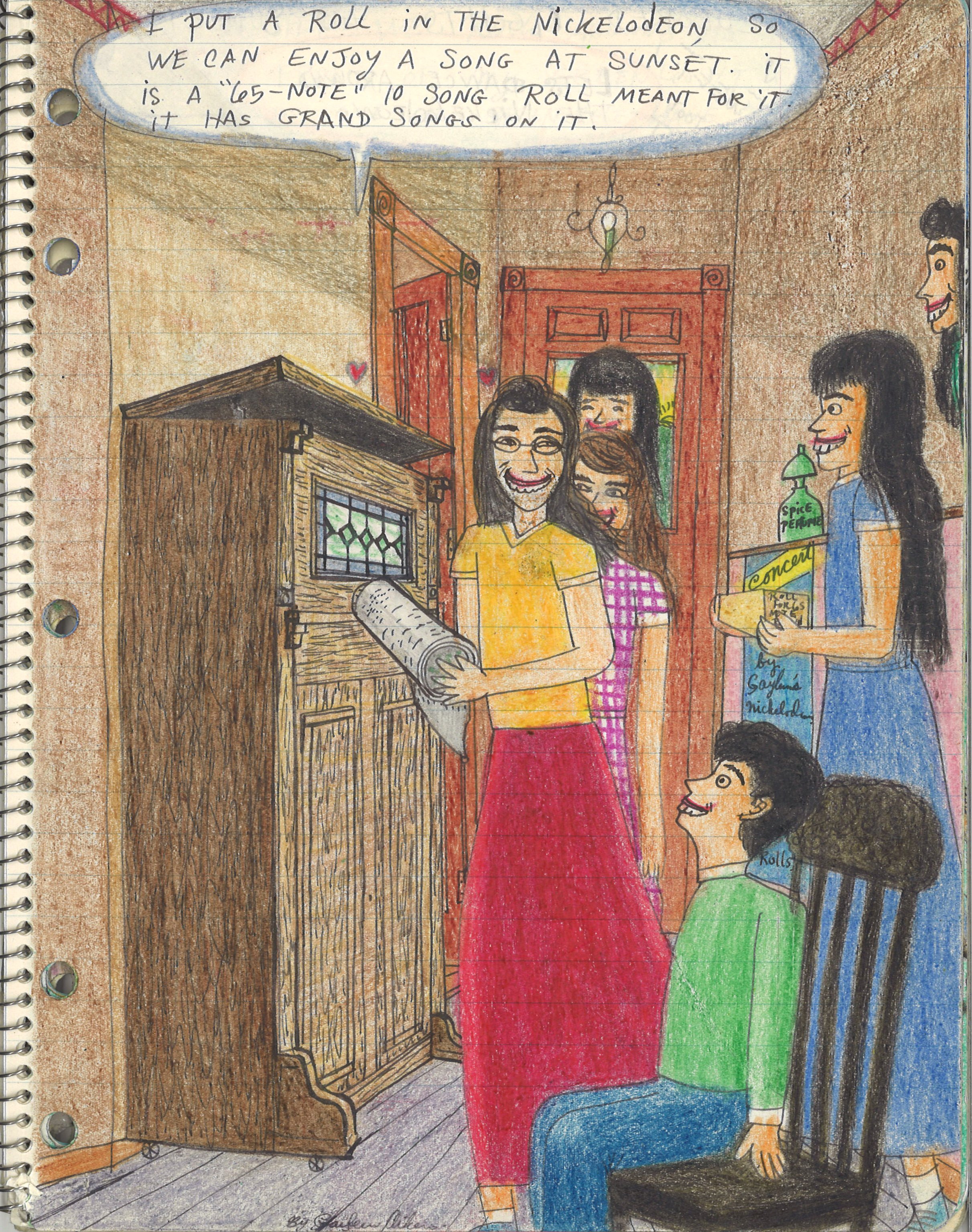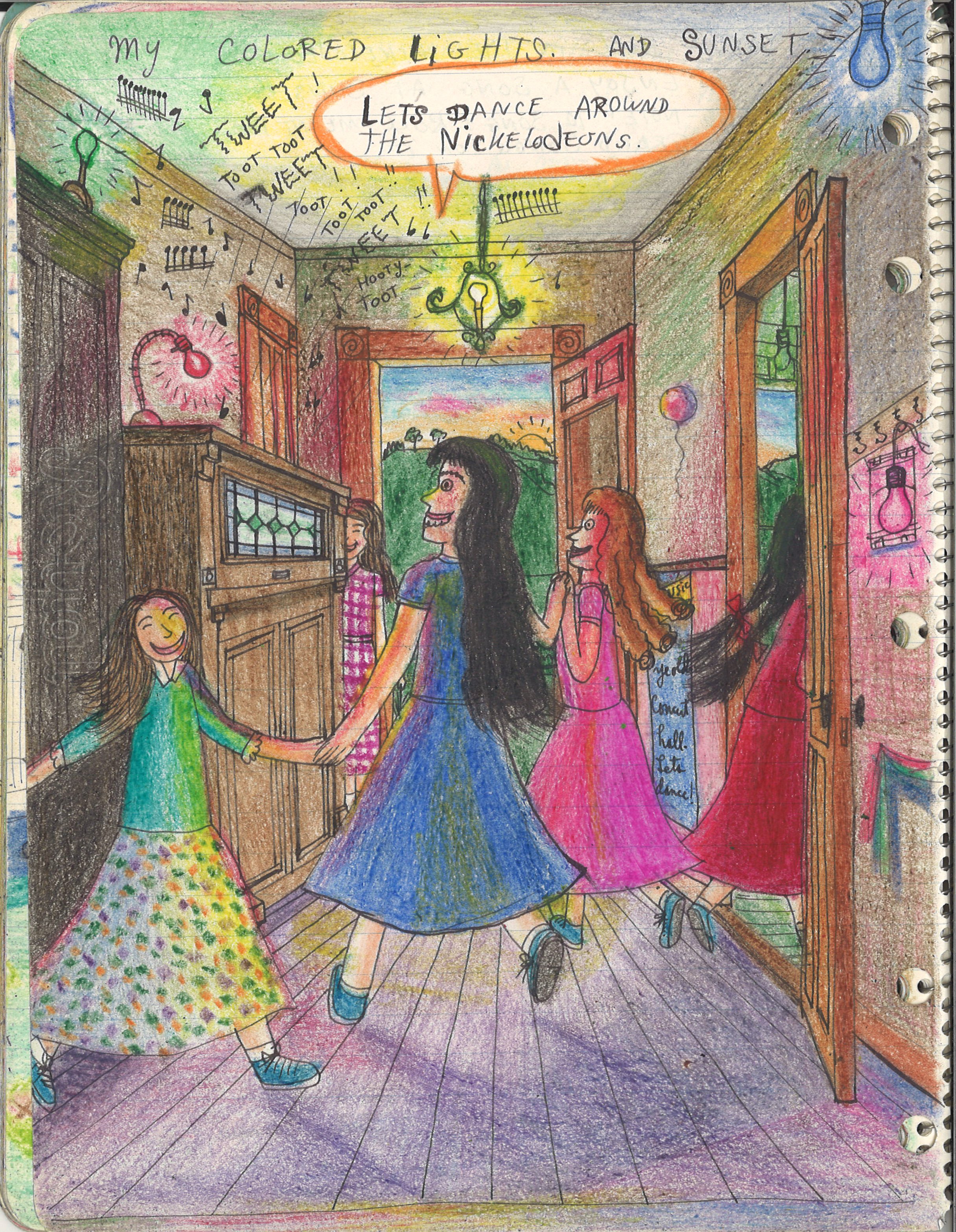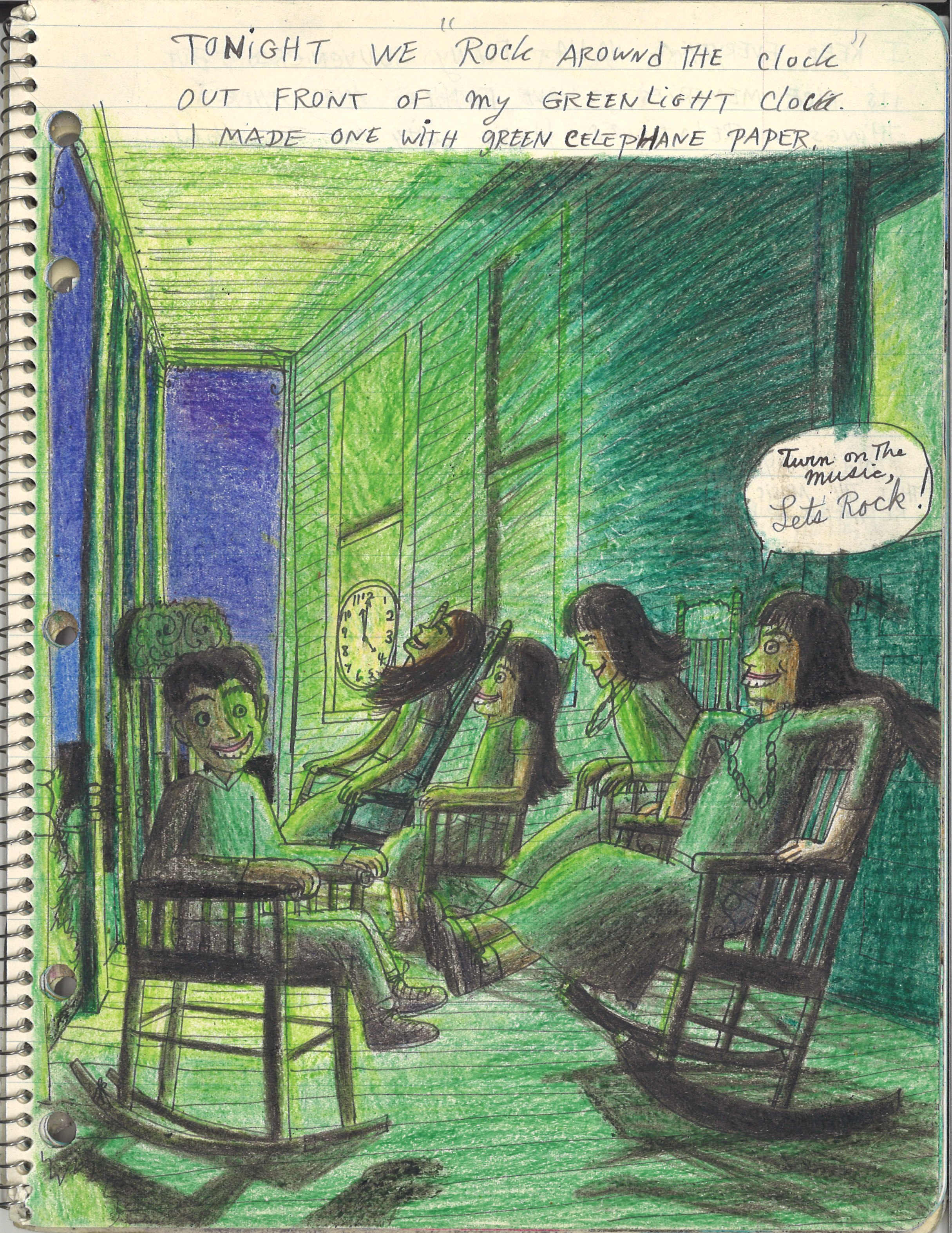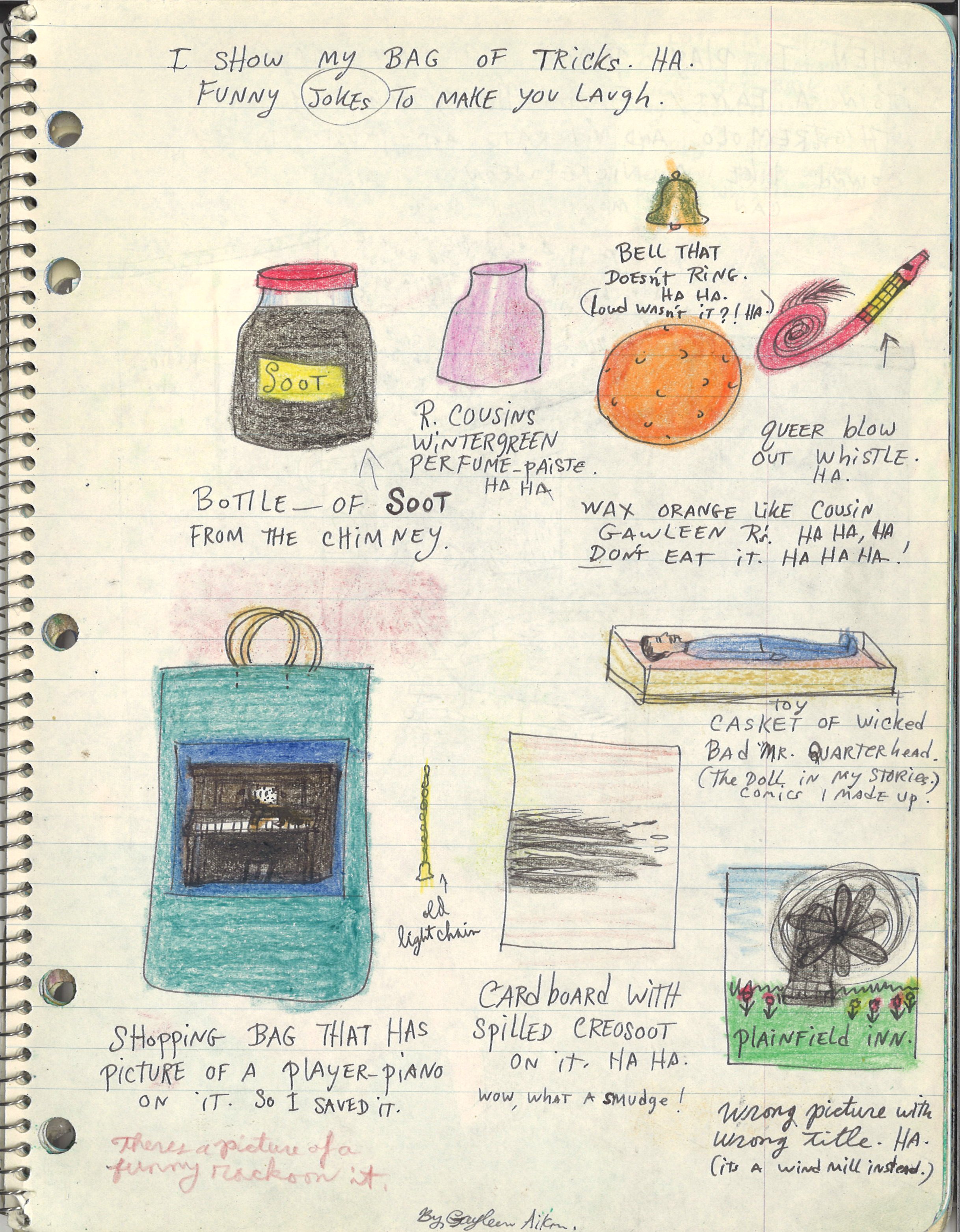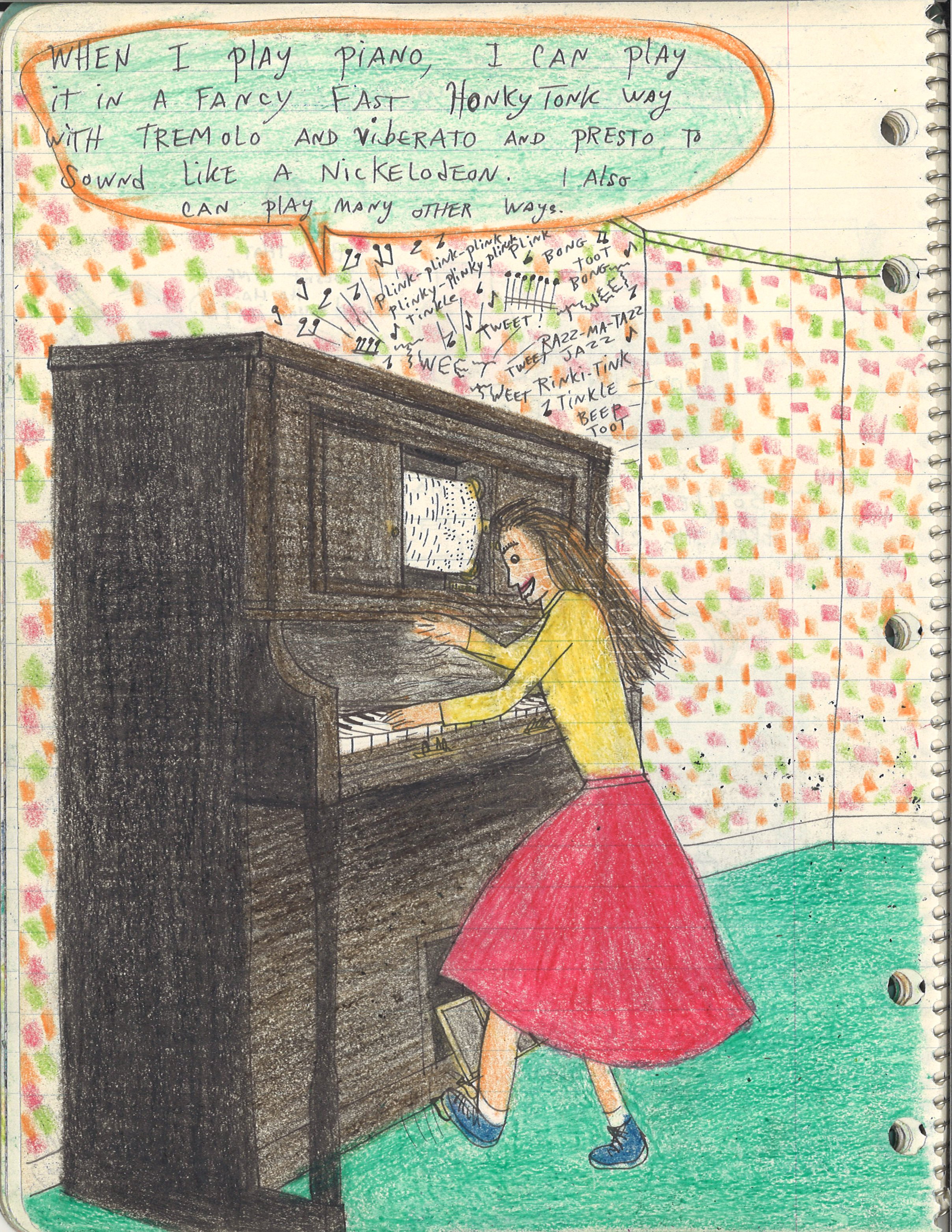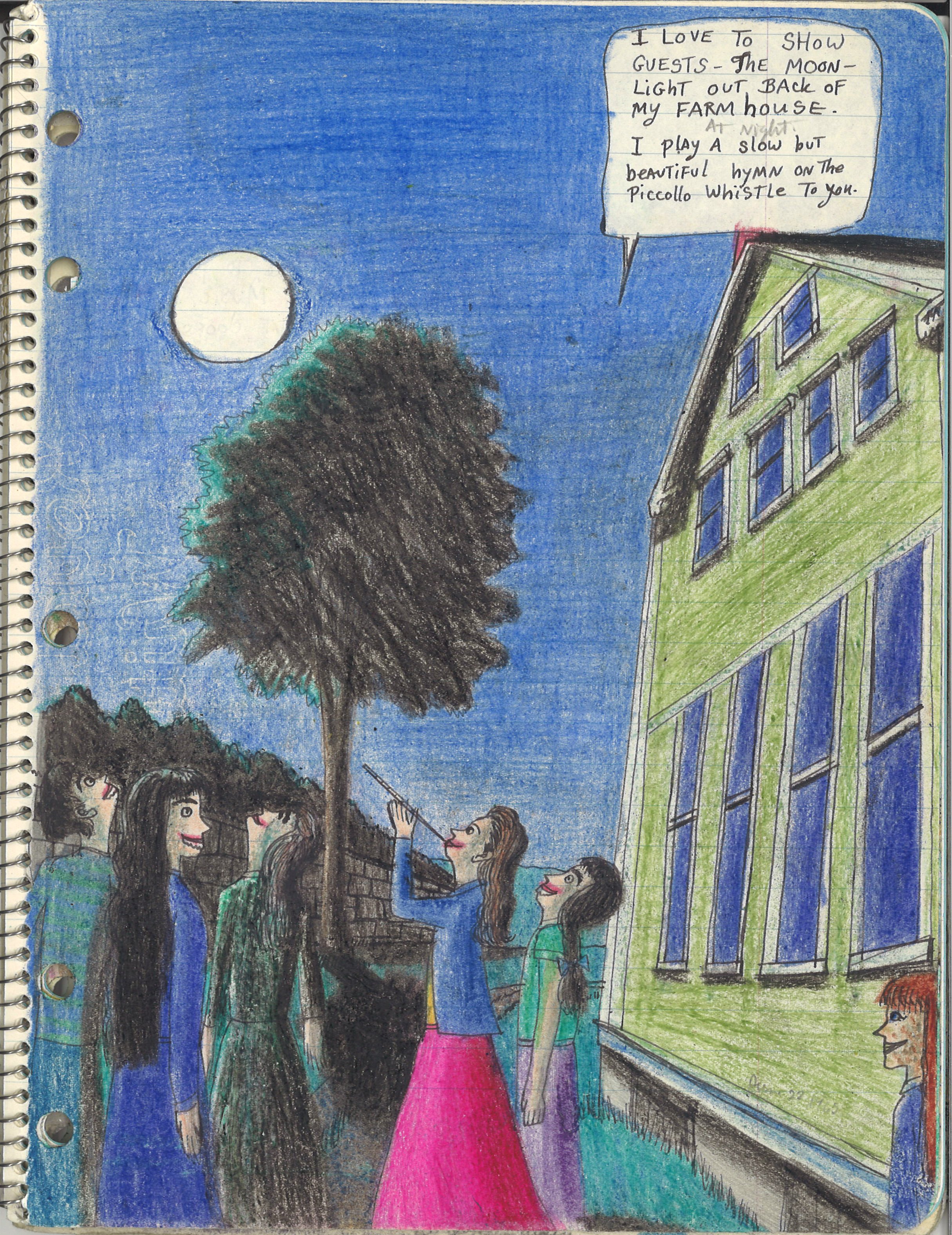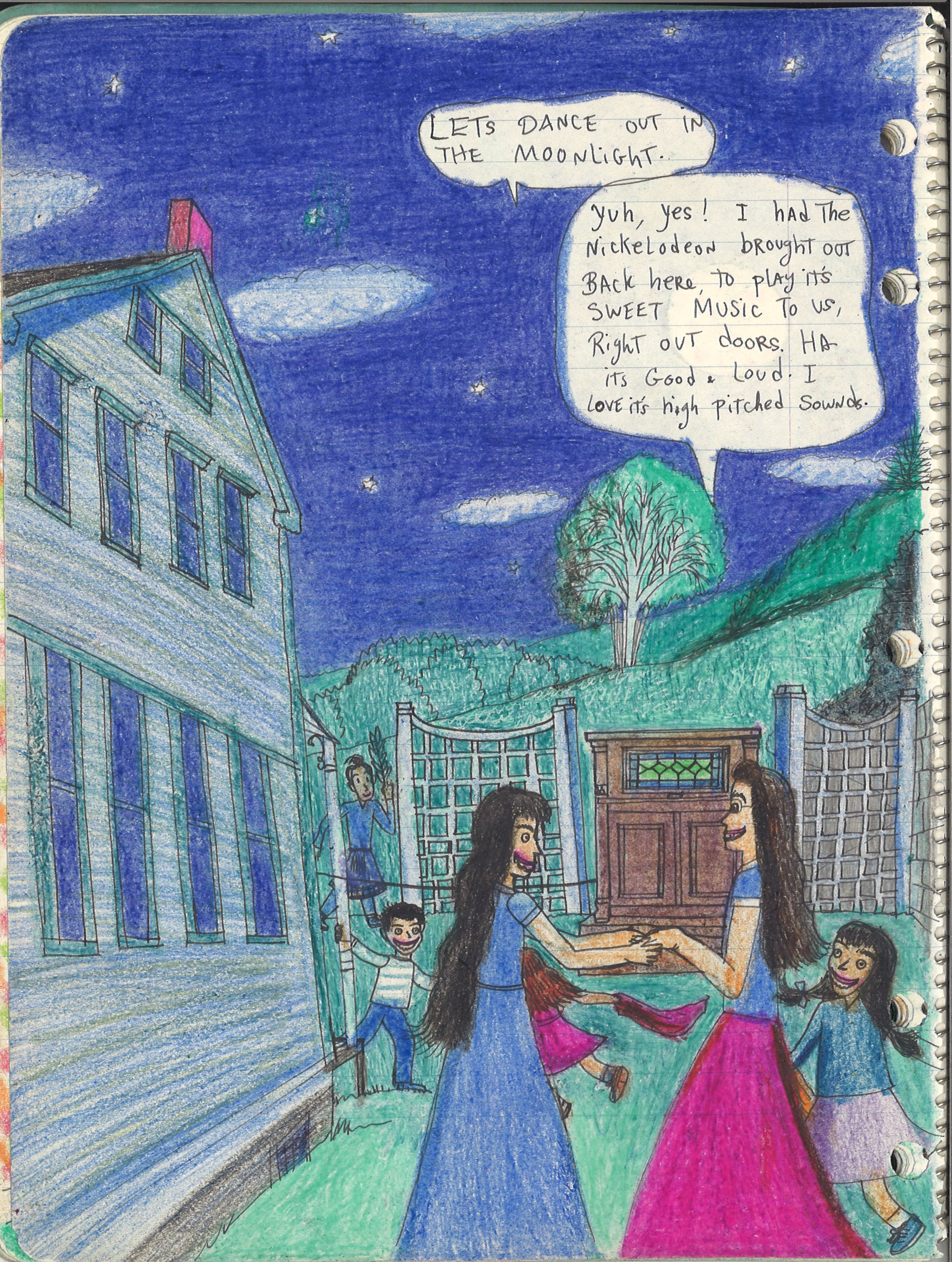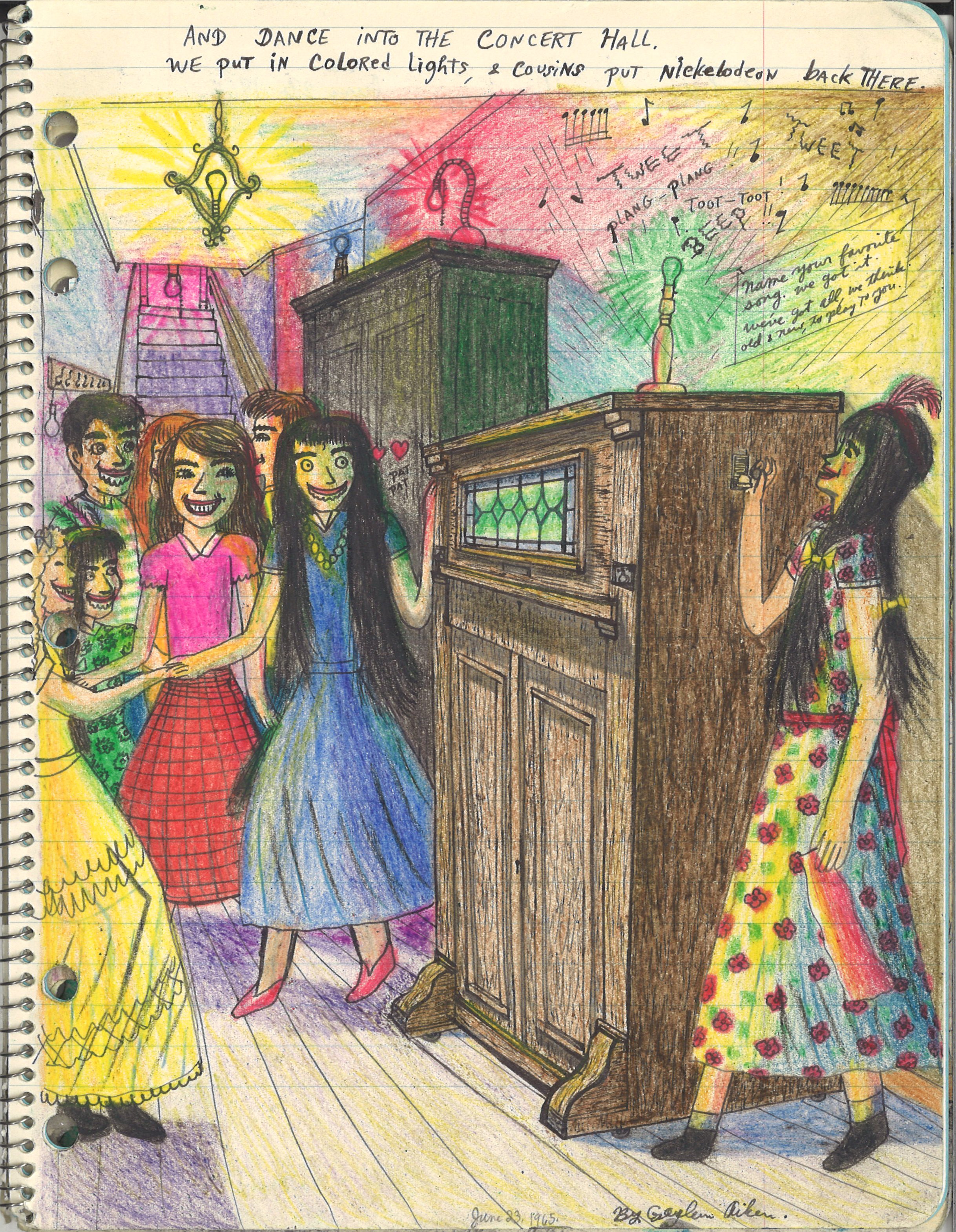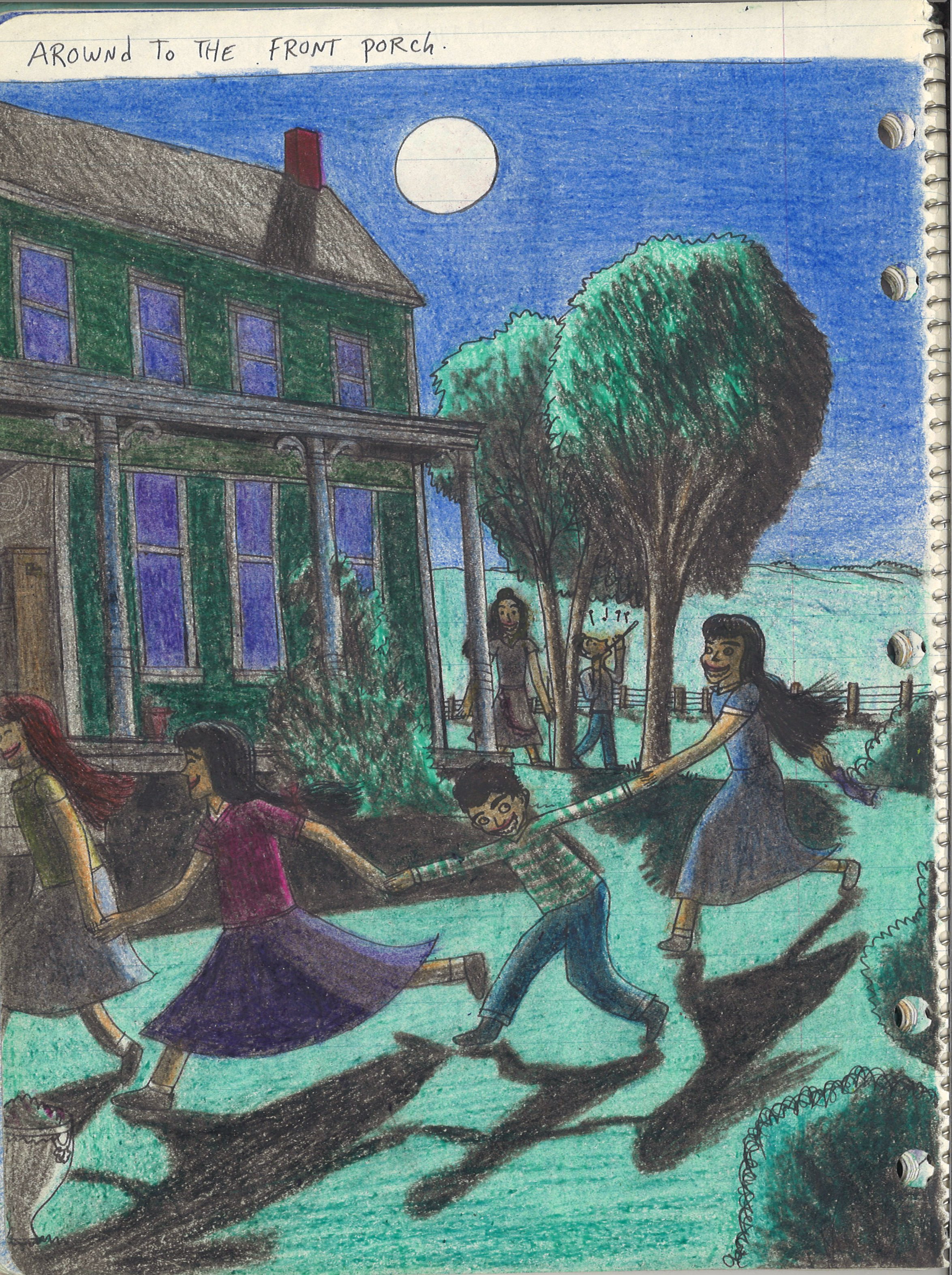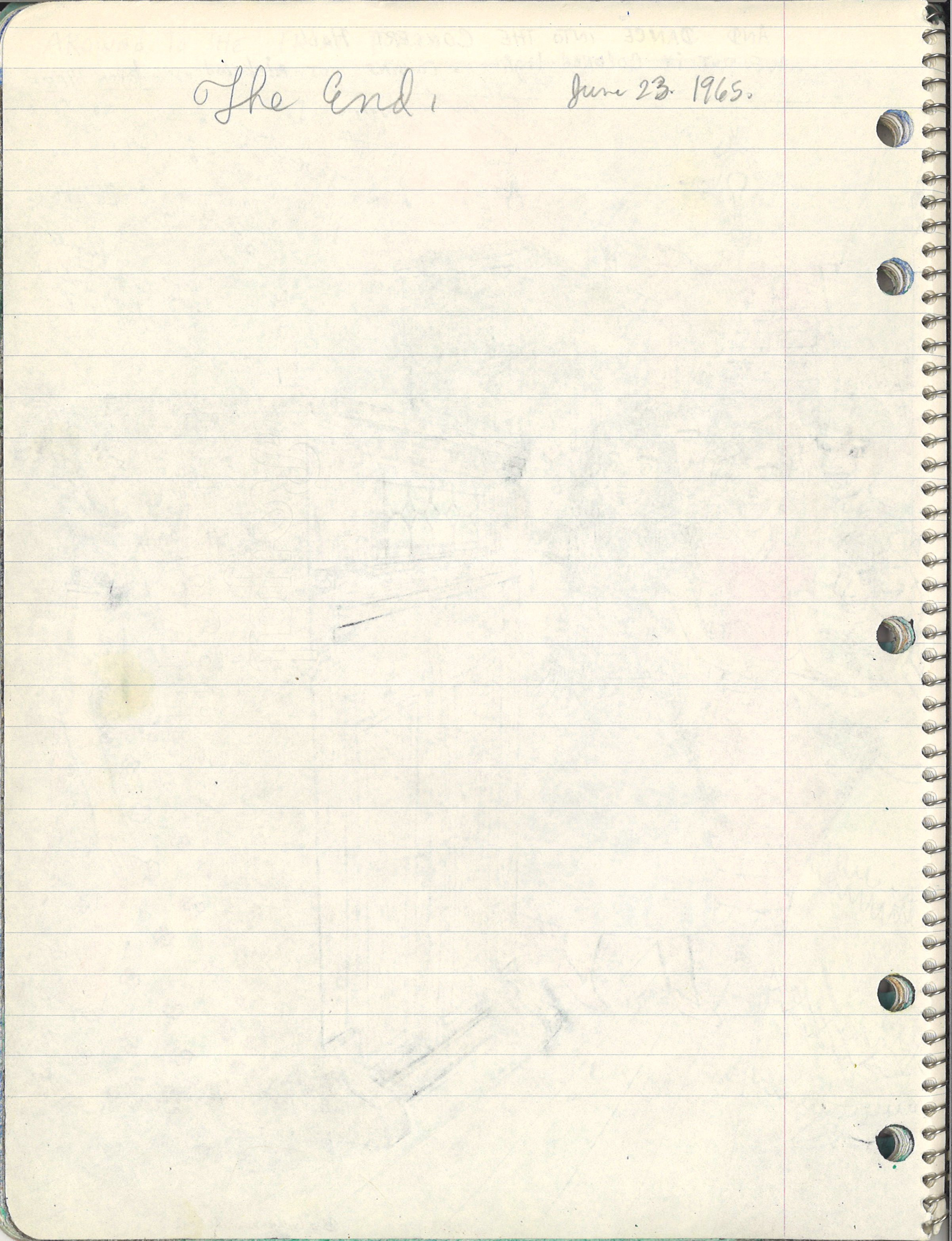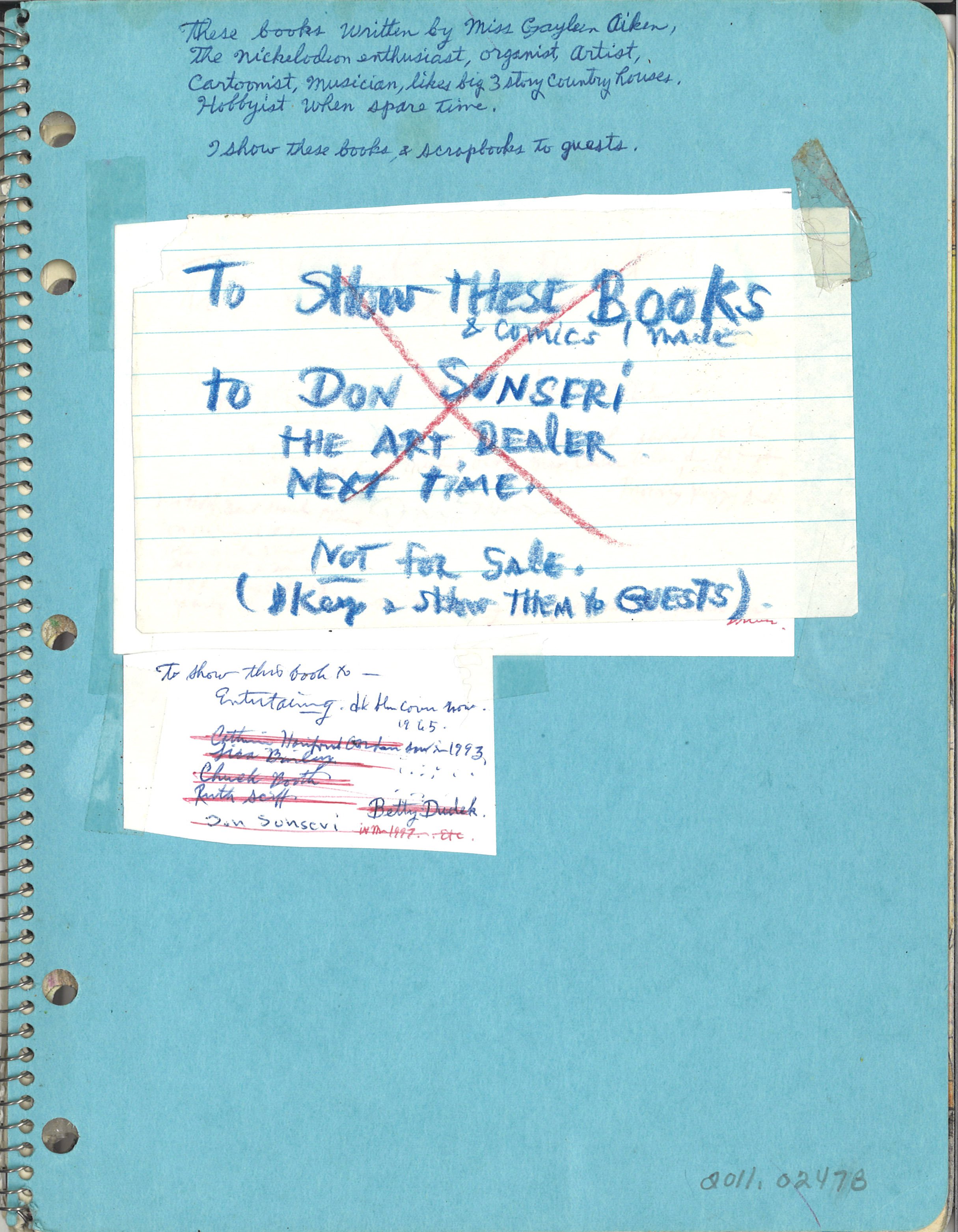The Curious Cousins of Vermont Outsider Artist Gayleen Aiken
The Sheldon Museum of Vermont History is pleased to present the work of self-taught, outsider/folk artist Gayleen Aiken (1934 – 2005). An only child, she began drawing a group of imaginary playmates that she named "the Raimbilli cousins" just before entering grade school. Her father operated a sporting goods and fix-it shop on the first floor of the family's large farmhouse.
By the time she was 8 or 9, she had made life-sized cutouts of 24 cousins —including "Cousin Gawleen"—using cardboard boxes from the outboard motors her father sold. She was teased and bullied by classmates, so her parents began home-schooling her in junior high. After her father died in the early 1950s, Aiken recalled, the family "got poor," the beloved old farmhouse was sold, and she and her mother moved into an apartment. Still, Aiken continued making pen and crayon drawings of the Raimbilli cousins living out adventures she dreamed of having—from dancing in the moonlight and playing pranks on parents to witnessing inanimate objects sprout arms and legs and come to life.
Steve Zind of Vermont Public Radio offered a poignant portrait of Gayleen Aiken: “The Ramibillis were the big family Gayleen never had. But they also represented something more universal. The happy Raimbillis, in their sturdy farmhouses filled with music, with the soft moonlight falling on the rooftops - these images aren't just Gayleen's idealized Vermont. They represent a Vermont we all carry in our imaginations.”
Gayleen was also a comic book author, storyteller, historian, and a musician. All of her paintings contain descriptive titles and a summary of her biography. She played the harmonica, xylophone, drums, piano, organ, and she sang. Her musical skills and enthusiasm are especially evident in the 1984 documentary film Gayleen by acclaimed Vermont cinematographer Jay Craven, which is on view in the gallery.
Gayleen's work has been shown in major exhibits in the US and Europe, to include: the American Folk Art Museum in New York City; the Visionary Art Museum in Baltimore, Maryland; the Abby Aldrich Rockefeller Folk Art Museum in Williamsburg; Virginia, and the American Art Museum of the Smithsonian in Washington, D.C. She was featured in the November 1992 edition of Smithsonian Magazine, the Winter 2002 edition of the magazine Raw Vision, and is the subject of a 1997 Abrams Press book, Moonlight and Music: The Enchanted World of Gayleen Aiken, by Rachel Klein.
We are most grateful to Grass Roots Art Community Effort (G.R.A.C.E.) for lending to the Henry Sheldon Museum the life-sized card board cutouts of the cousins (1 of 3 sets) and the over two dozen works of art, and to G.R.A.C.E. Managing Director Kathryn Lovinsky and Artistic Director Kathy Stark whose inspirational leadership, generosity, and commitment make the exhibit possible. We also thank Jane Smith, Kate and Bill Schubart who graciously have lent several Gayleen paintings, letters, and biographical material.
The exhibit could not occur without financial underwriting and we are grateful for the support of an anonymous donor whose gift is in memory of G.R.A.C.E. founder Don Sunseri, Fran Bull, Caroline and Willard Jackson, Kate and Bill Schubart, and Richard Levey and Sigrid Christiansen, whose gift is in honor of the Reverend Rollin B. Norris and Mrs. Margo Norris. The Sheldon also thanks Brian Ladeau of Otter Creek Custom Framing and Kurt Broderson of MCTV for their framing and technical expertise.
The staff of the Henry Sheldon Museum lent their artistic and manual labor in planning and installing the exhibit. We thank Associate Director Mary Manley, Middlebury College Interns Grace Bryan and Matt Brophy, Archivist Eva Garcelon Hart, Bookkeeper Judi Loewer, Housekeeper Donna Sargent, and stalwart volunteers Lynne McKenna and Michael Manley.
William F. Brooks, Jr., Executive Director
Collection Images
Click on the photos for more information!
“Entertaining,” 1965









